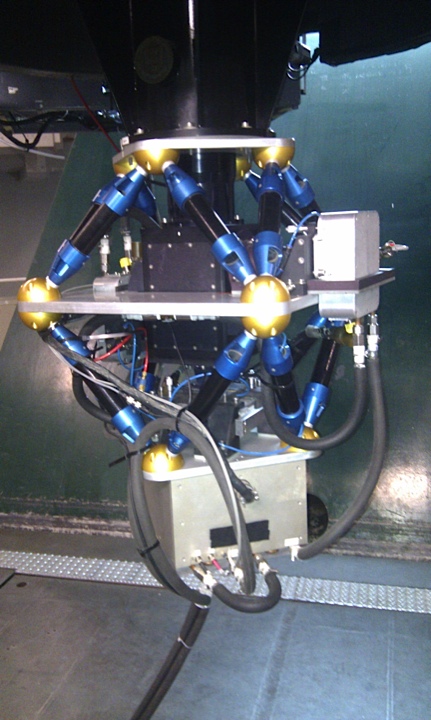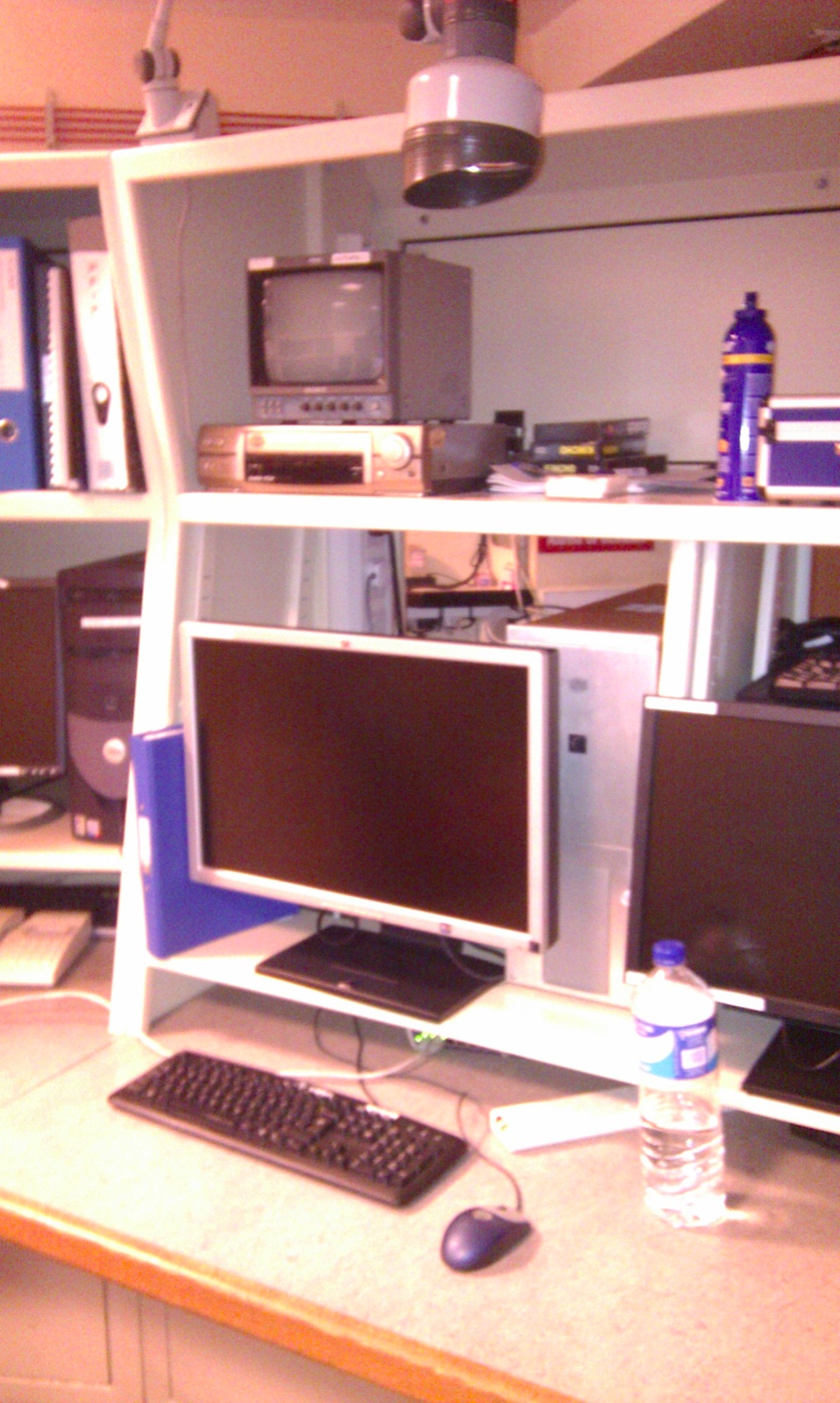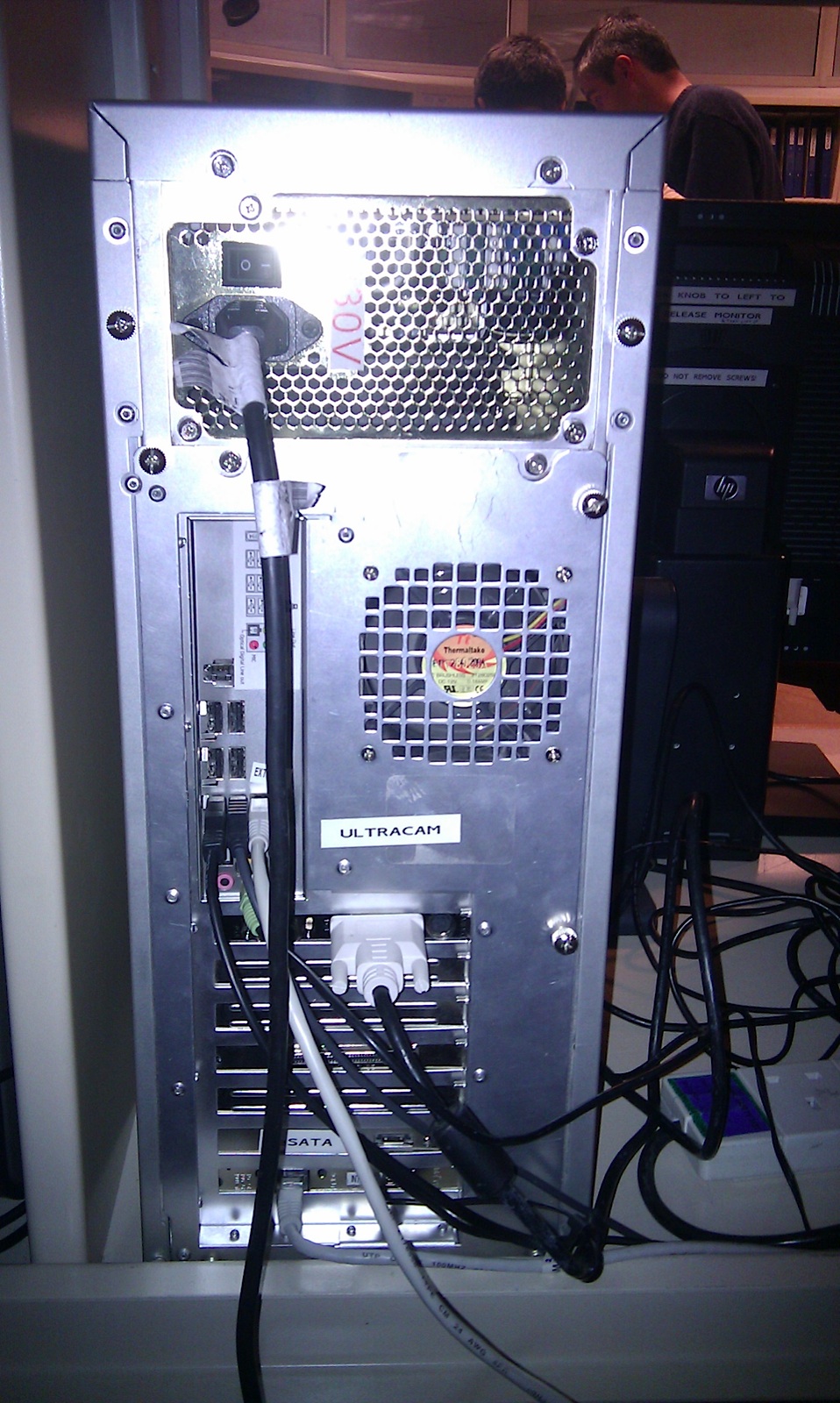ULTRACAM manual for hardware setup at the WHT, La Palma
Liam Hardy, version: 24 April 2014
- Introduction
- Unpacking
- Mounting
- Installing the focal plane mask
- Installing the GPS antenna
- Cabling up
Introduction
These instructions tell you how to mount ULTRACAM on the WHT. They were
written following an installation on 10th July 2013 by Stuart and Liam, and are compiled together with notes from Ed Daw's instructions for mounting ULTRACAM at the NTT in Chile.
Be very careful to be neat and tidy in
getting out and putting away the parts! Anything that goes
missing, even one bolt, can really make installation very hard.
Especially during deassembly, be very careful to put everything
back in the correct bag, and the bags back in the correct boxes.
The packing lists should still be correct when we are ready to
ship back to Sheffield or off to the next telescope. Also, cable
assemblies are delicate. Do not throw, drop, or jerk cable connectors
as this can cause unseen damage that can then be very hard to
diagnose, wasting valuable time later.
Unpacking
There are six shipping cases. Each box has a packing list
taped to the inside of the lid. You will need to examine the
packing lists and find the different components.
The ULTRACAM packing cases consist of five flight
cases and one wooden crate. The flight cases are all clearly
marked ULTRACAM; the wooden crate has ULTRACAM written on it
roughly in marker pen. Below is a picture of a typical flight
case.
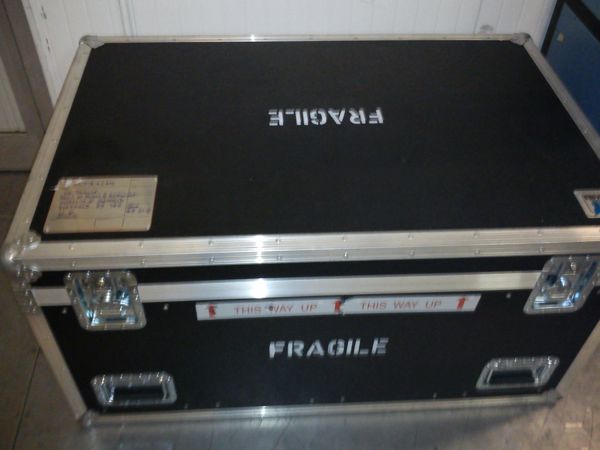
ULTRACAM, the rack, the focal plane slide and the water chiller
should all be brought up to the observing floor with the help of the
engineers. They will also need the black collar designed specifically
for mounting onto the WHT. Other useful items include the bolts box,
the toolbox, and the optics cleaning box. The lift can be used to move most
things (see photo).

Mounting
The mounting bracket, or collar, is show below.
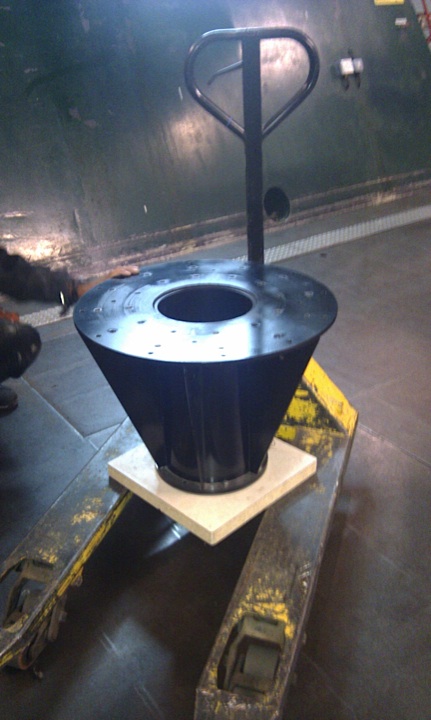
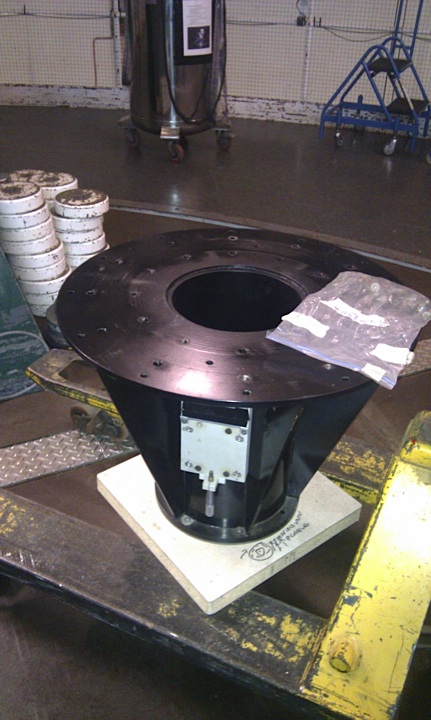
The engineers will mount the collar and the rack to the telescope, and the instrument to the collar. You should find the bolts for attaching the collar to the telescope and the instrument to the collar in the bolts box in one of the ULTRACAM crates. Examples of bolt bags are shown below. Do not tighten the bolts too hard into the aluminium body of
ULTRACAM or you risk sheering off the threads.
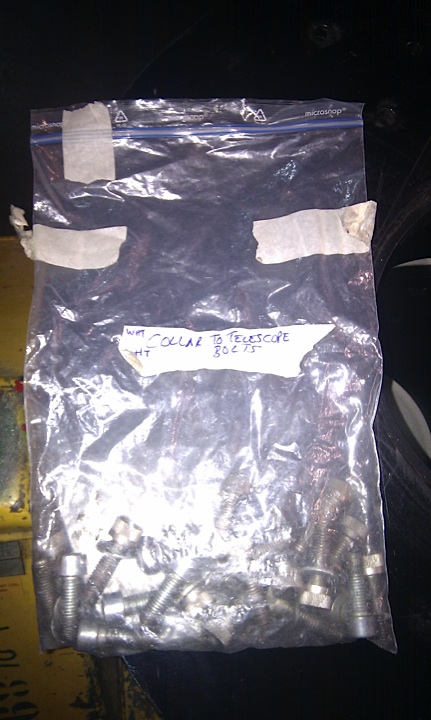
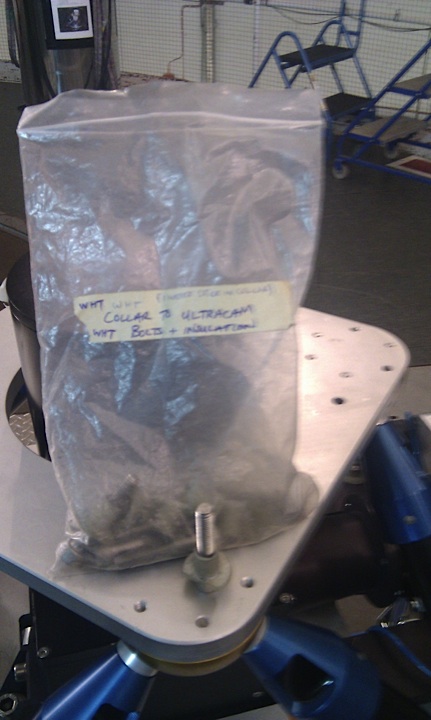
The bolts for mounting the rack to the telescope are provided by the ING engineers, as the mounting plate belongs to them.
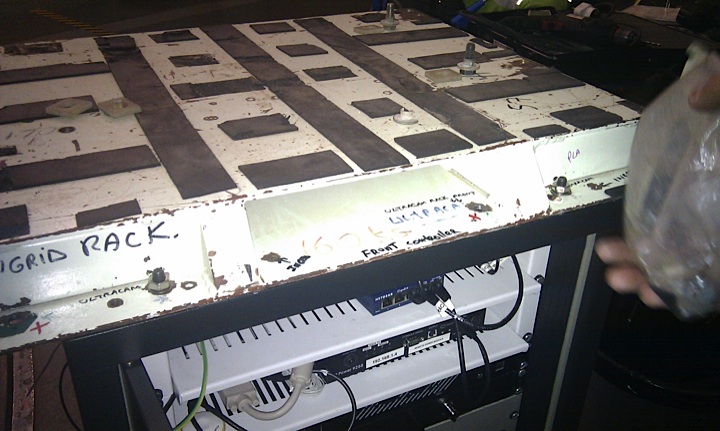
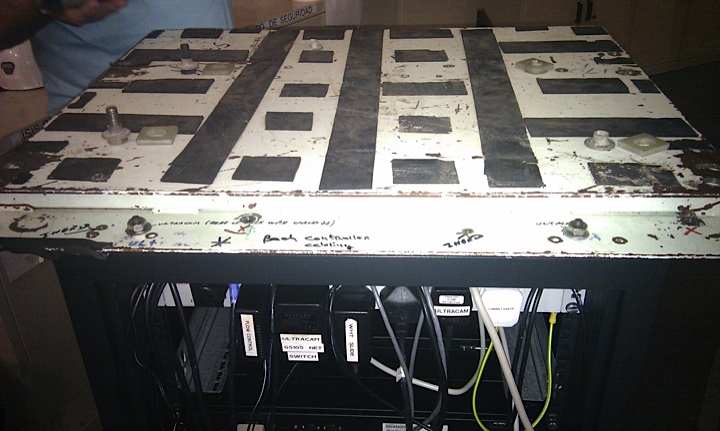
Ensure they use the insulating washers when mounting the rack and the instrument (see photos) - these should be found in the bolts box.
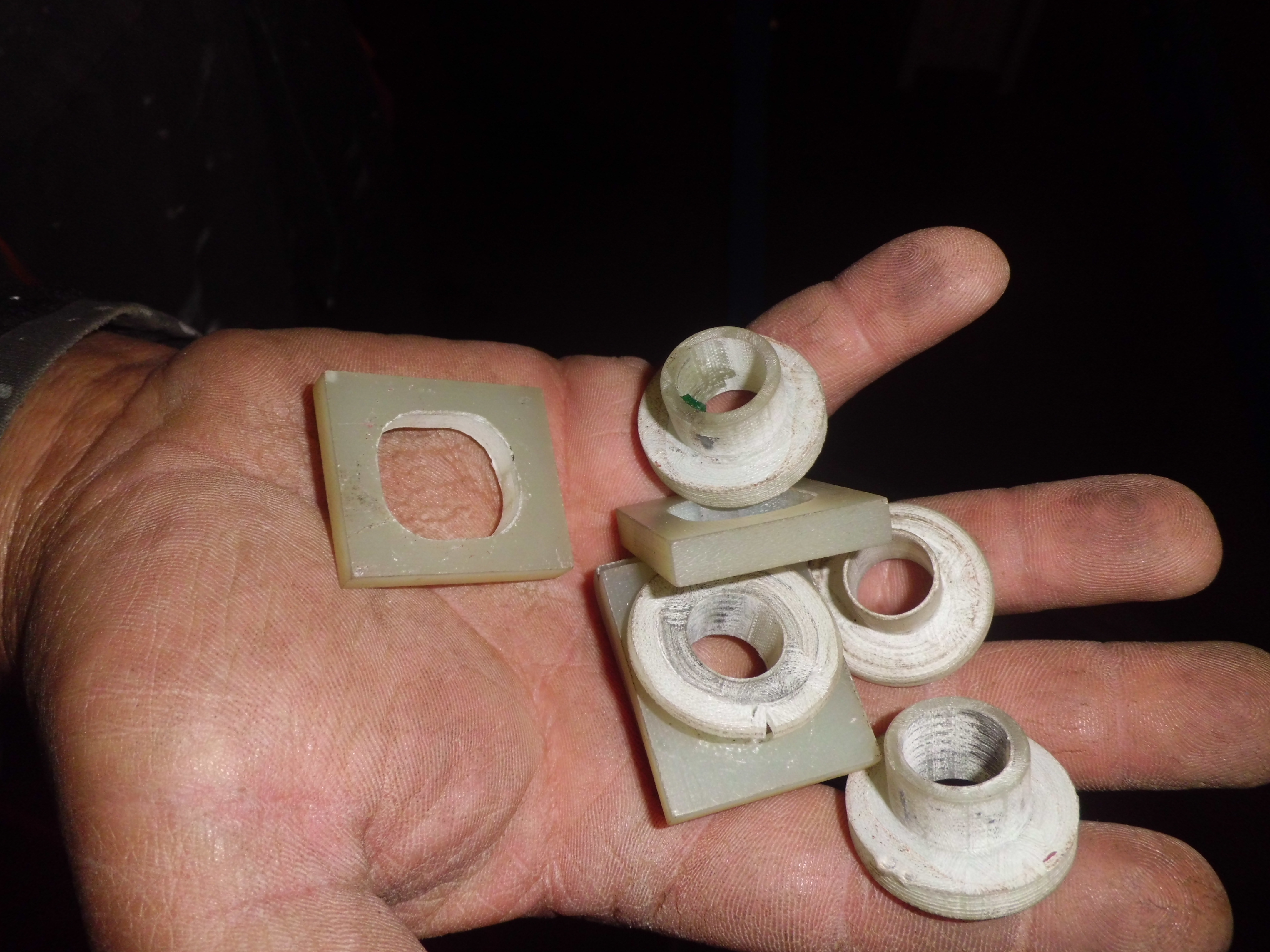
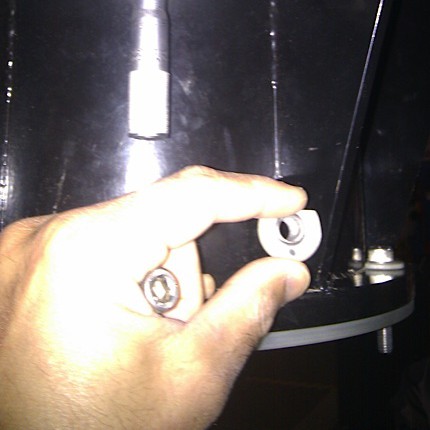
It is important that the collar is aligned such that the arrow
on the aluminium top plate of ULTRACAM lines up with the corresponding
arrow on the black collar. When the instrument is mounted, ensure
it is also aligned correctly, with the focal plane slide bracket
lining up with the gap in the telescope counter weights, and with
the stickers matching up as shown in the figures below.
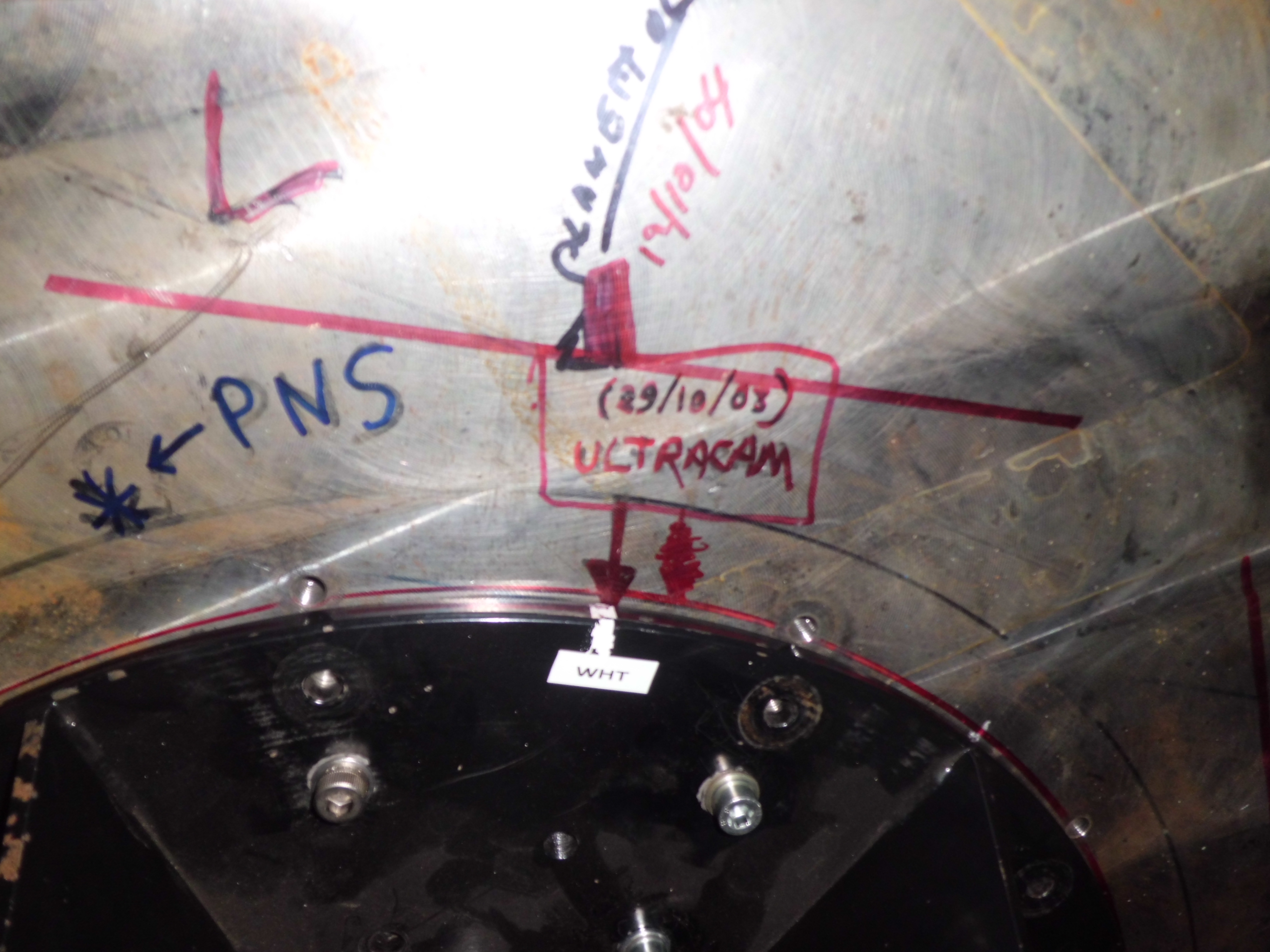
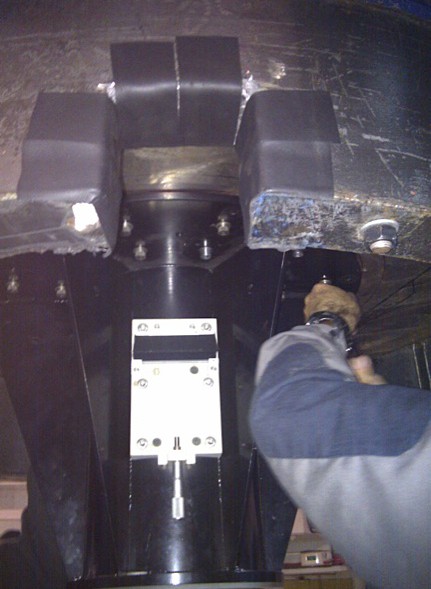
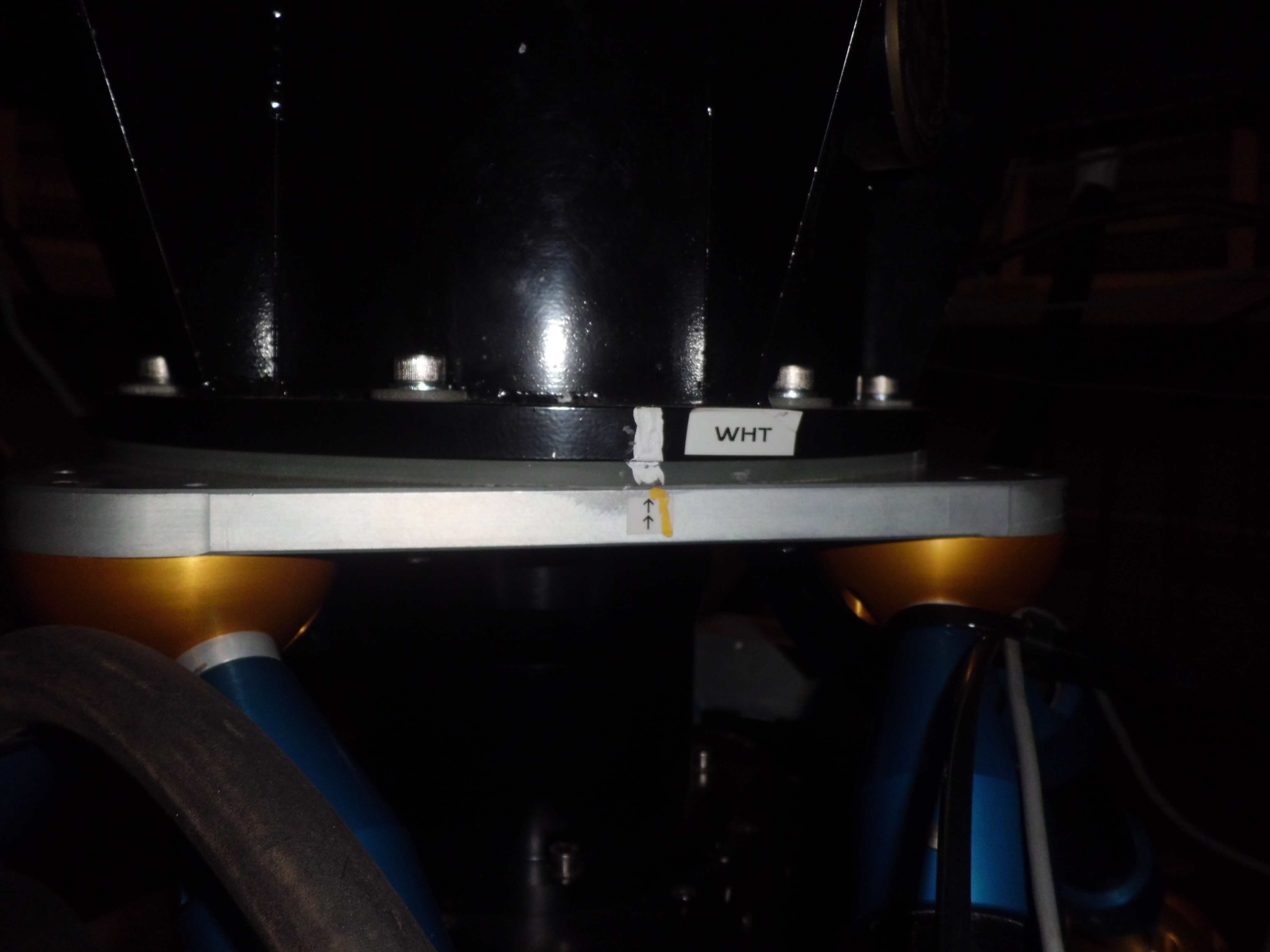
Before mounting the instrument to the collar, the lens cap should be removed, and cleared of any dust/debris using a clean air source. Spray cleaner should be used with care. Shake the can first, and always hold the can upright
when spraying. Spray into the air or the back of your hand first in case there is some
initial contamination in the nozzle or bottle.
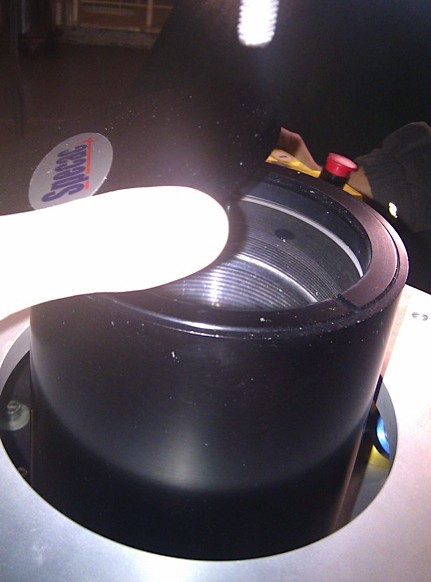
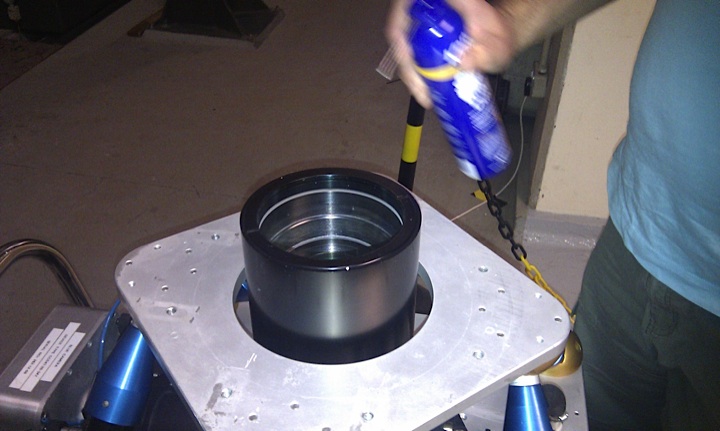
Store the lenscap carefully in the bolts box.
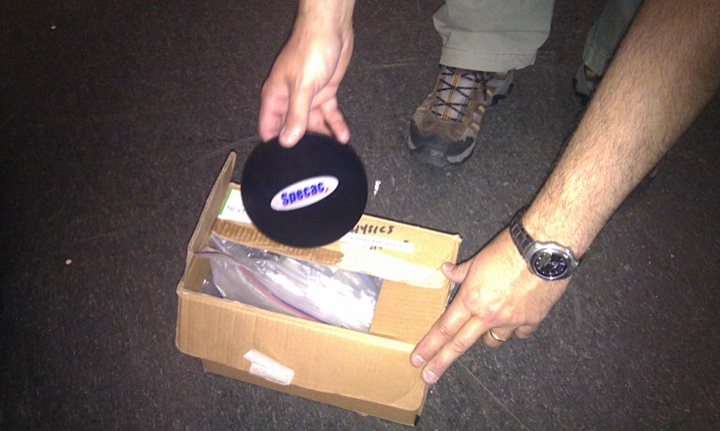
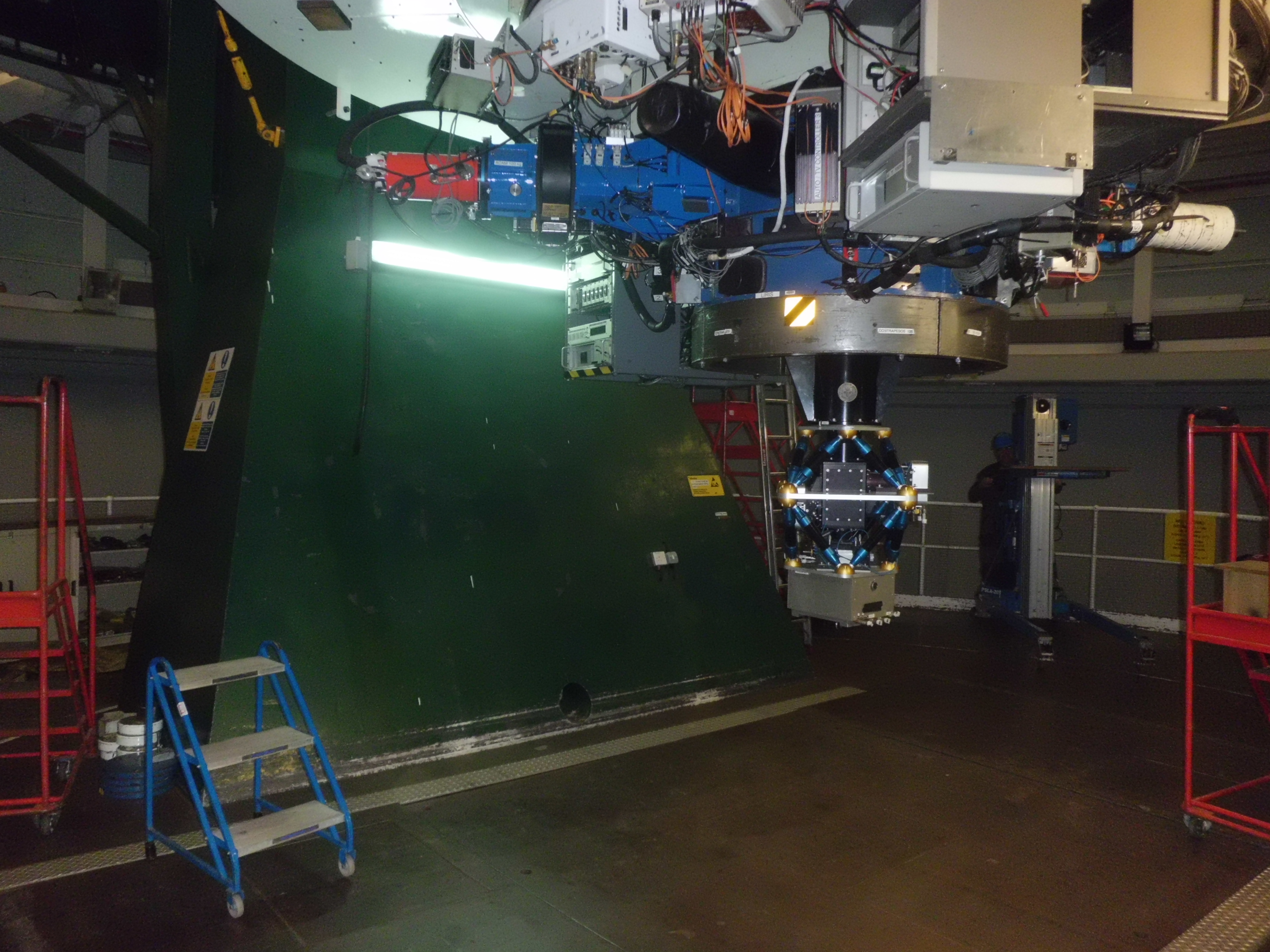
Mounting the rack with insulation between the mounting plate and
the telescope. Make sure the ING's stainless-steel braided He pipes
(shown in right-hand photo below) are not touching the top of the
rack, as this could cause a ground loop and hence pickup noise in the
detectors.
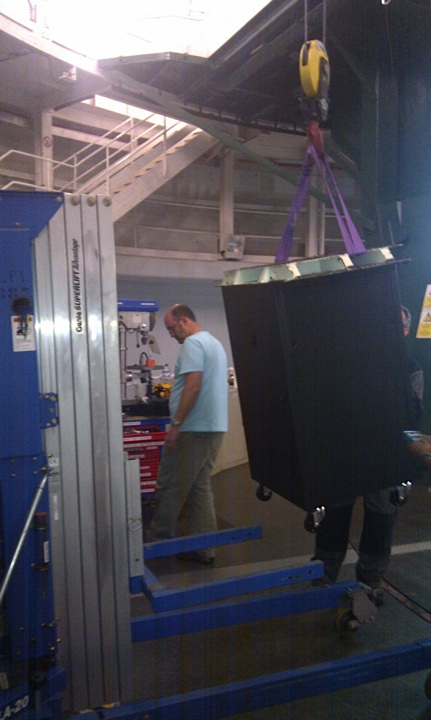
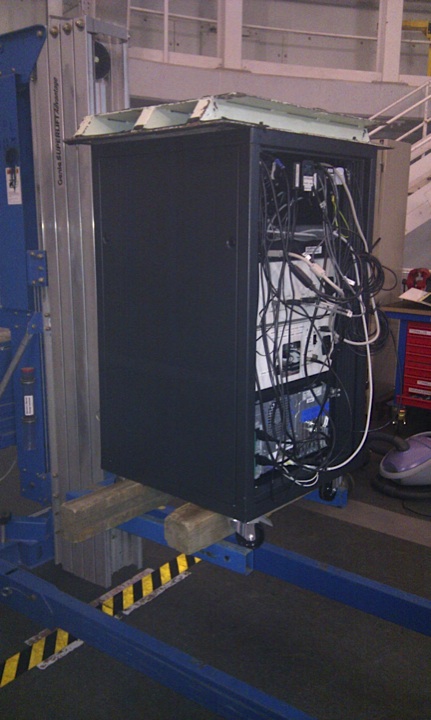
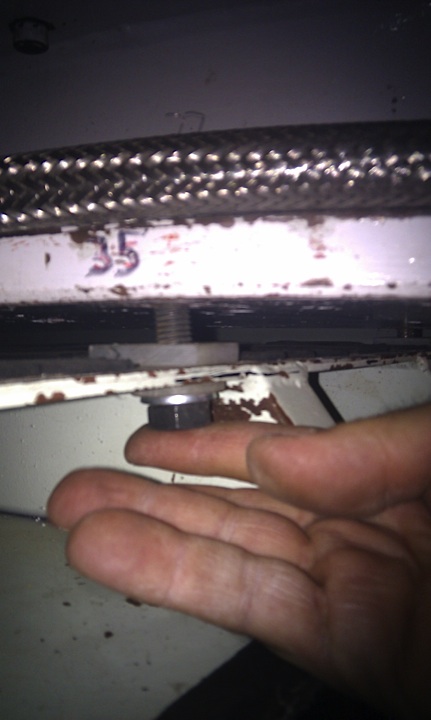
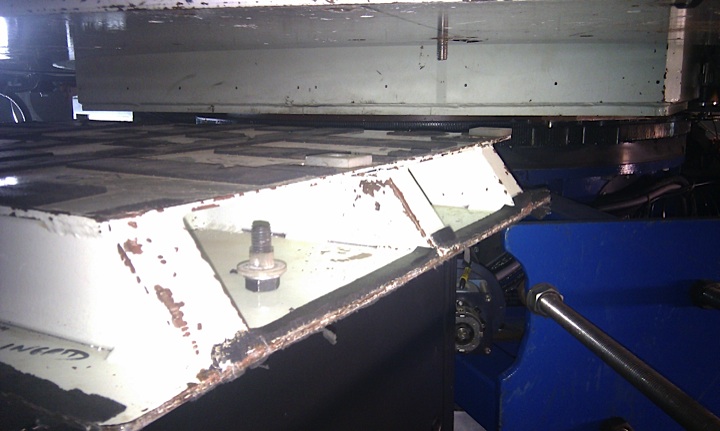
In the bolts box you should also find the 'cable twister',
a strong steel hoop which screws into the underside of the SDSU
controller on the bottom of ULTRACAM. This is used to hold the
weight of the water hoses. Install this once the instrument is mounted.
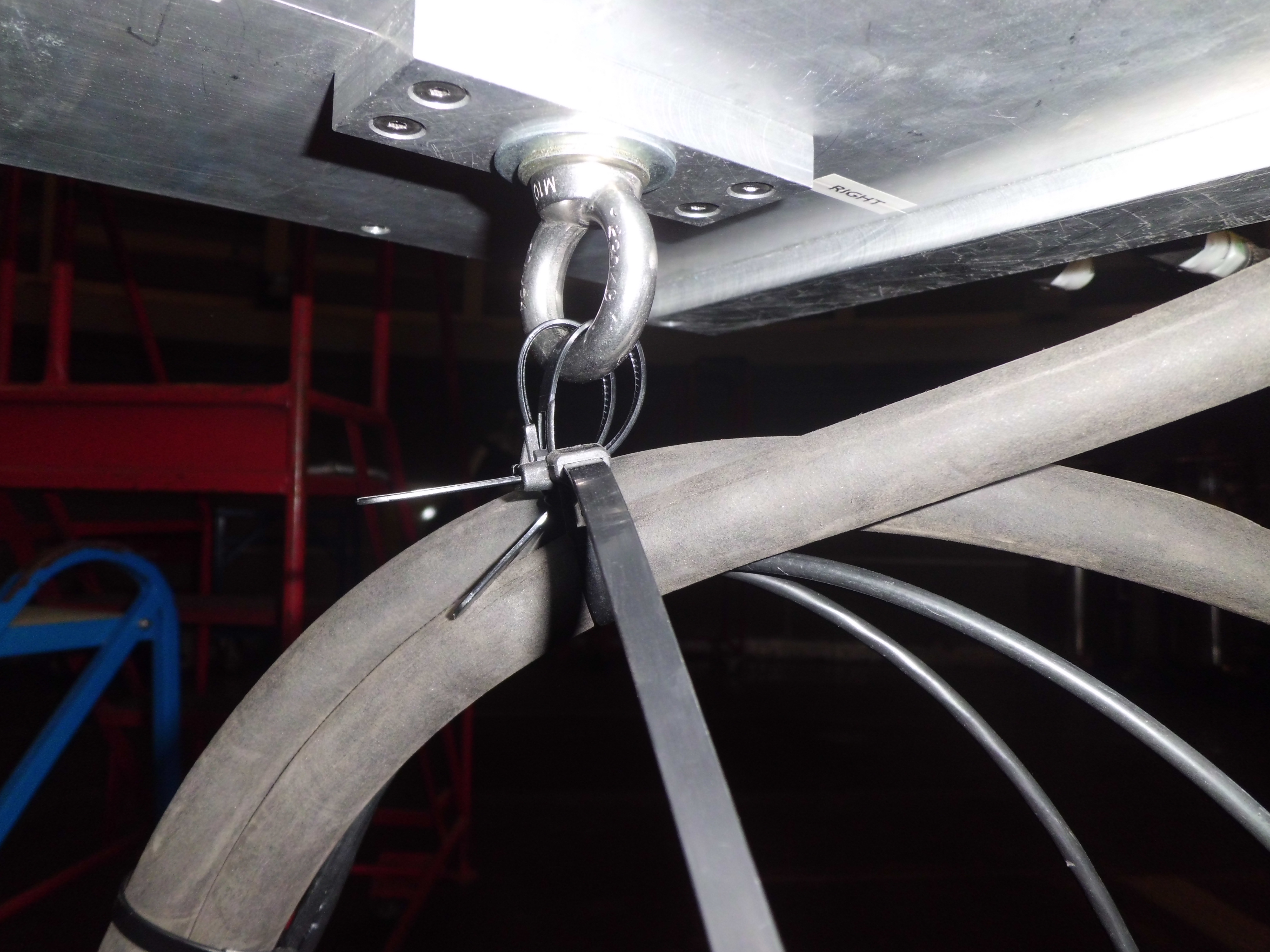
Installing the focal plane mask
Next, mount the focal plane slide and bracket onto the side of the
black mounting collar. Use the four small countersunk bolts, which
should be found in the bolts box, if they are not already set in the
focal plane bracket. The slide should slot through the gap cut through
the telescope counter weights (see photos). This process can be quite
tricky, as the slide bracket is spring loaded in the vertical
direction. Once done, check that the micrometer is at its correct
position (indicated on a sticker on the side of the bracket).
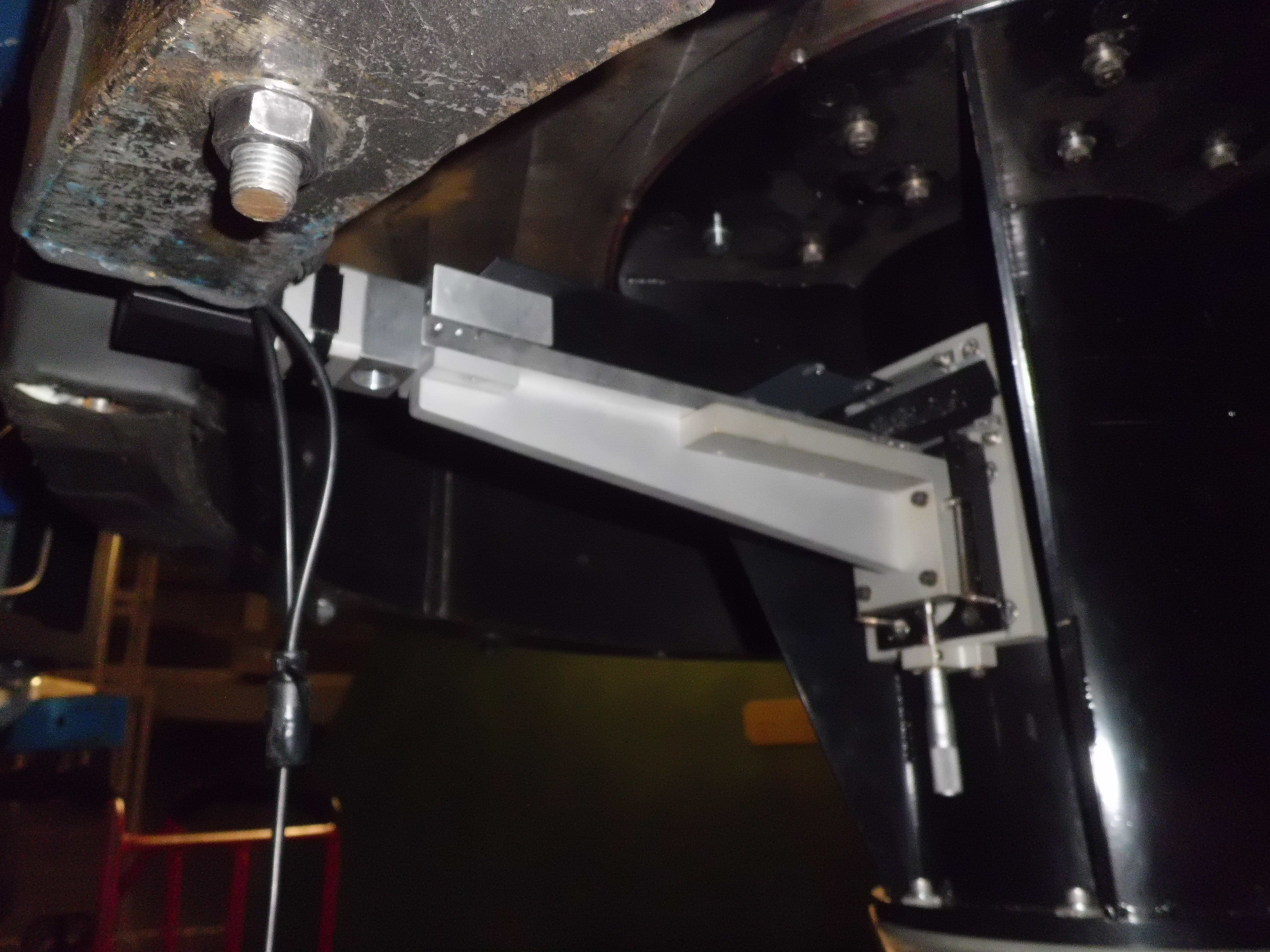
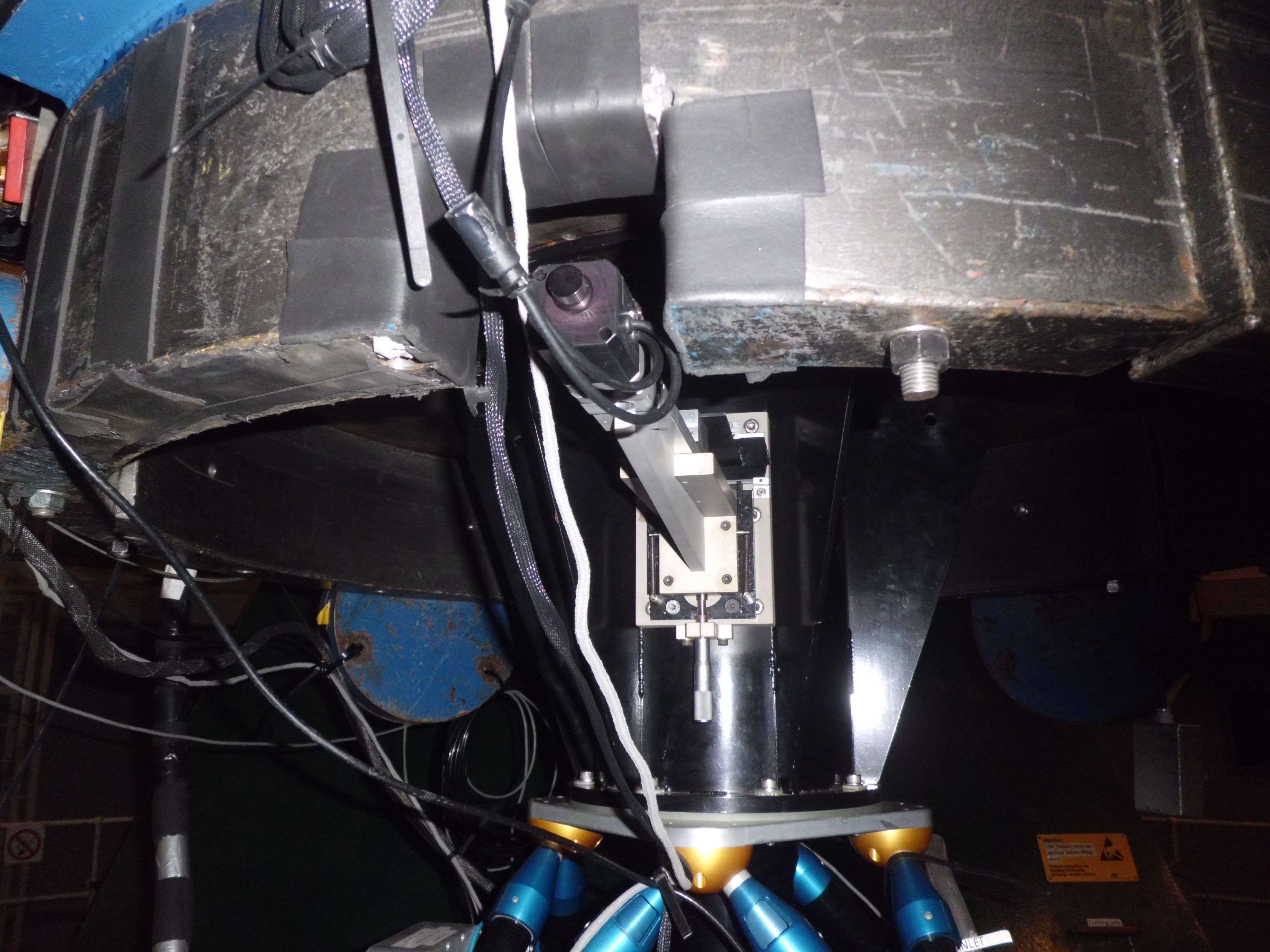
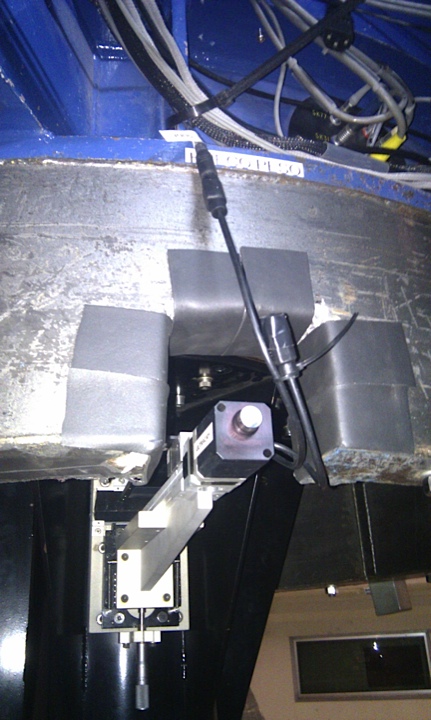
Installing the GPS antenna
Set up the GPS antenna outside the dome, by attaching it to one of
the posts on the North driveway. The GPS cable runs down through the
azimuth cable twister, over the bridge near the East entrance on the
ground floor of the dome, around the inside wall and out under the
white metal sheeting on the outside of the dome. It is attached to the
antenna by the aerial socket on the bottom - it is quite tricky to do
this if you have big fingers and easy to fool yourself that the
connector is attached when it actually isn't. Use flat rocks to anchor
down the GPS cable, so that it cannot flap around in high winds.
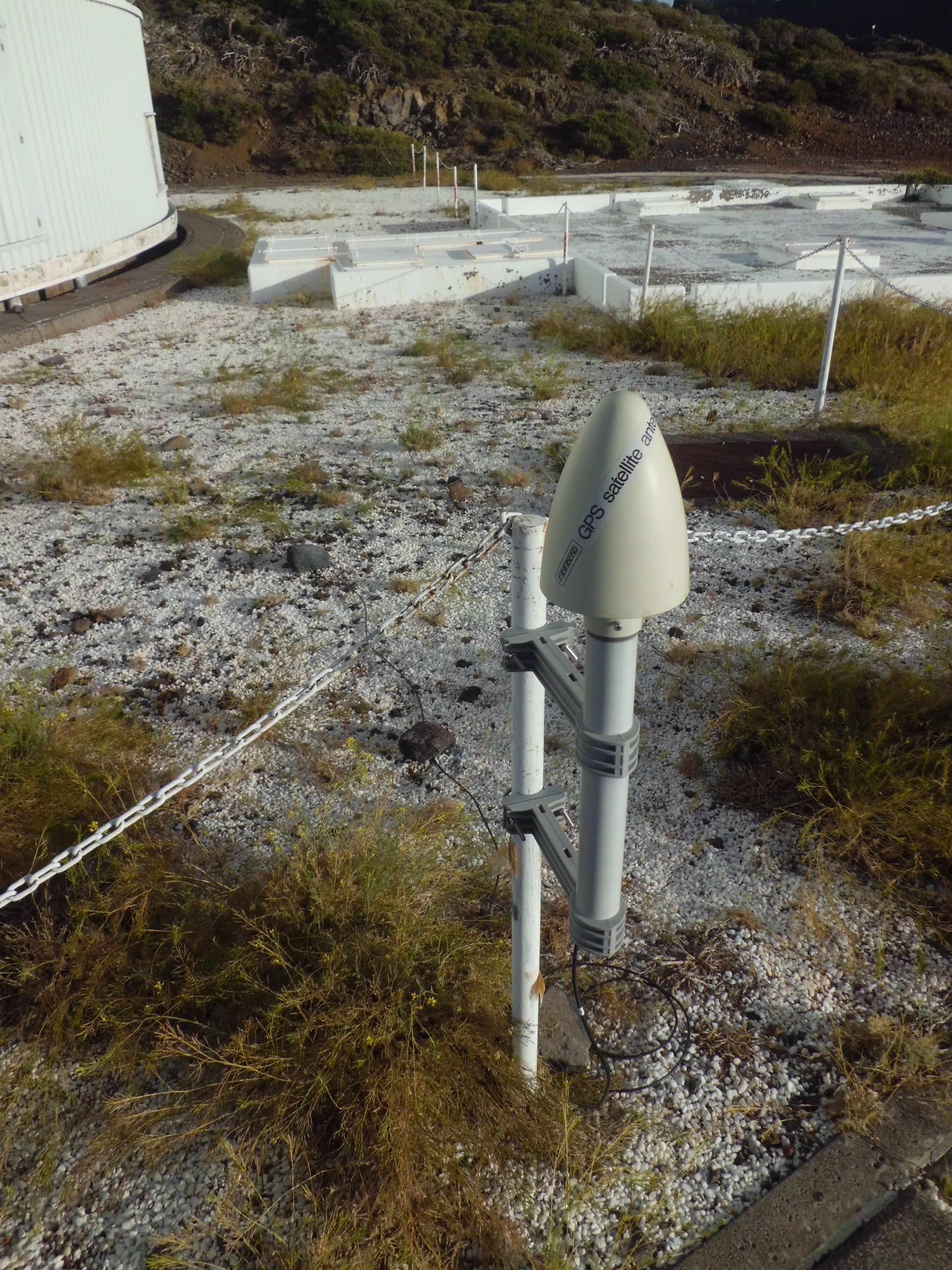
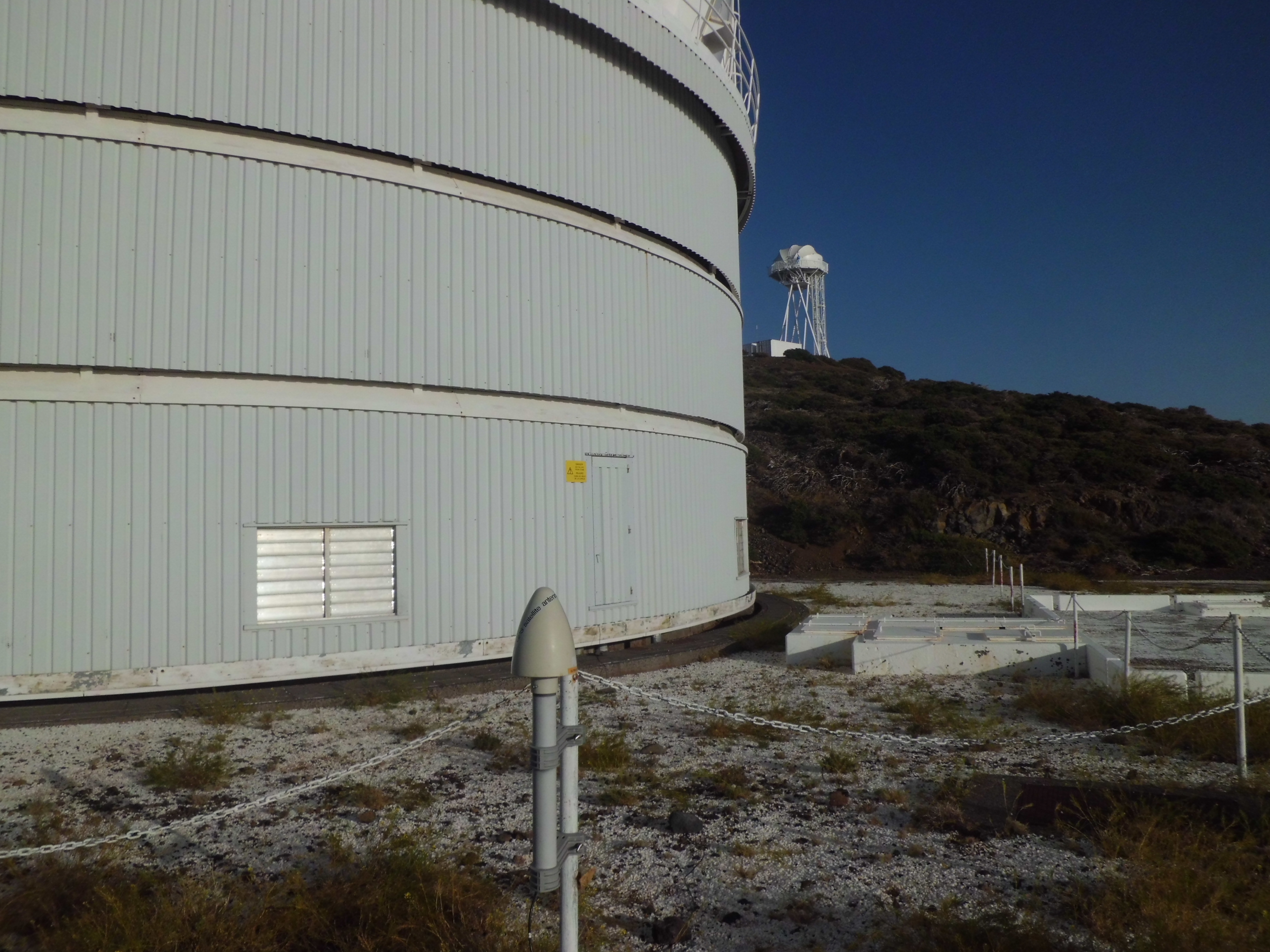
Cabling up
Cabling Up - the following cables must be attached carefully and
without putting strain on connectors. Data cables and power cables
should not pass close to each other if possible, to avoid pickup
noise. In particular, avoid running any cables near the black
video/bias cables running between the SDSU controller (from the end
opposite the LED display) and each CCD head. Any loose cabling should
be carefully secured so that it cannot flap around as the telescopes
moves.
- Black SDSU power cable which connects from the SDSU on ULTRACAM to the power supply in the middle of the rack. Make sure the mains power is OFF to this unit before putting your hand through the hole at the rear of the rack unit, otherwise electrocution is possible!
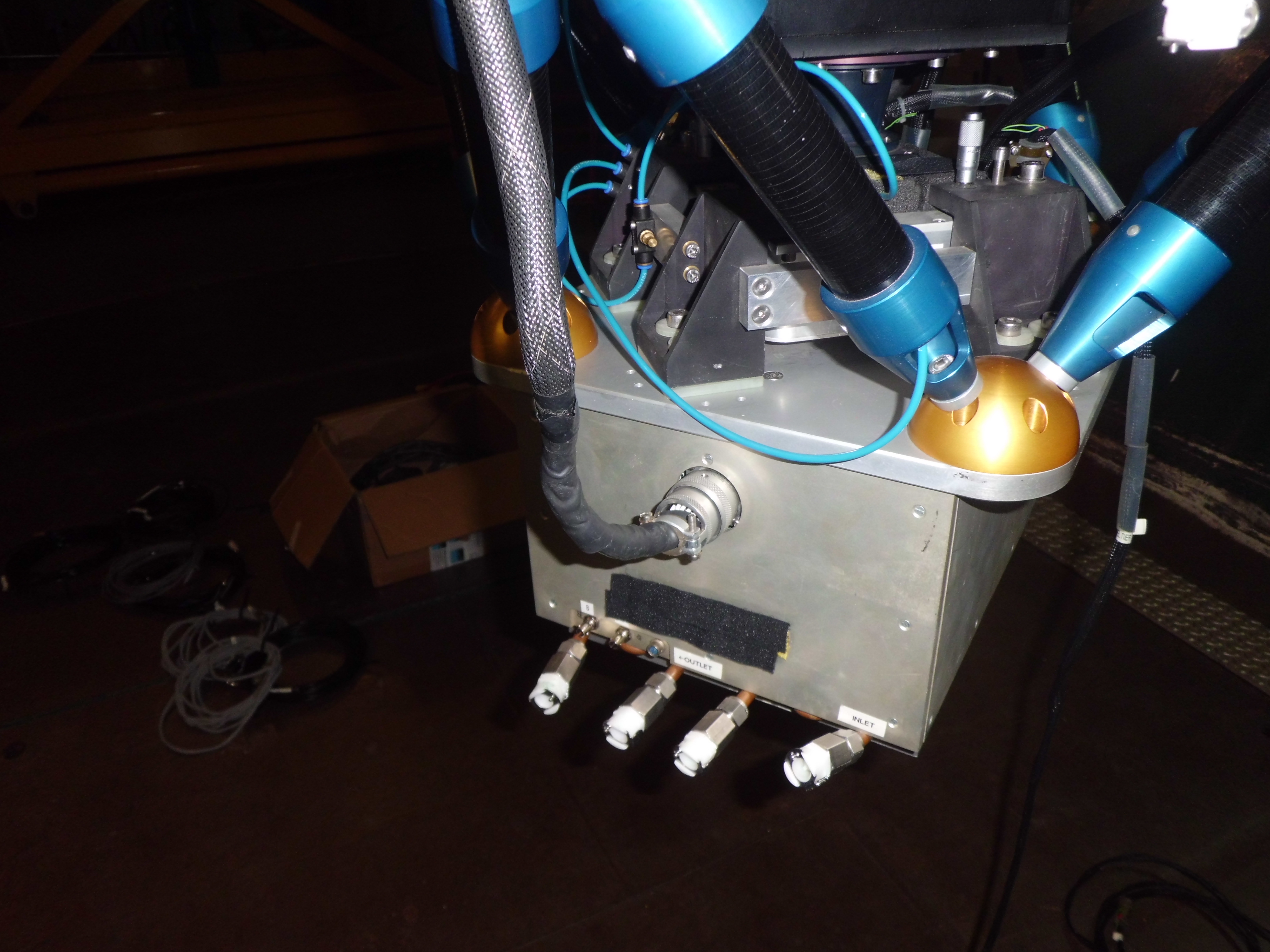
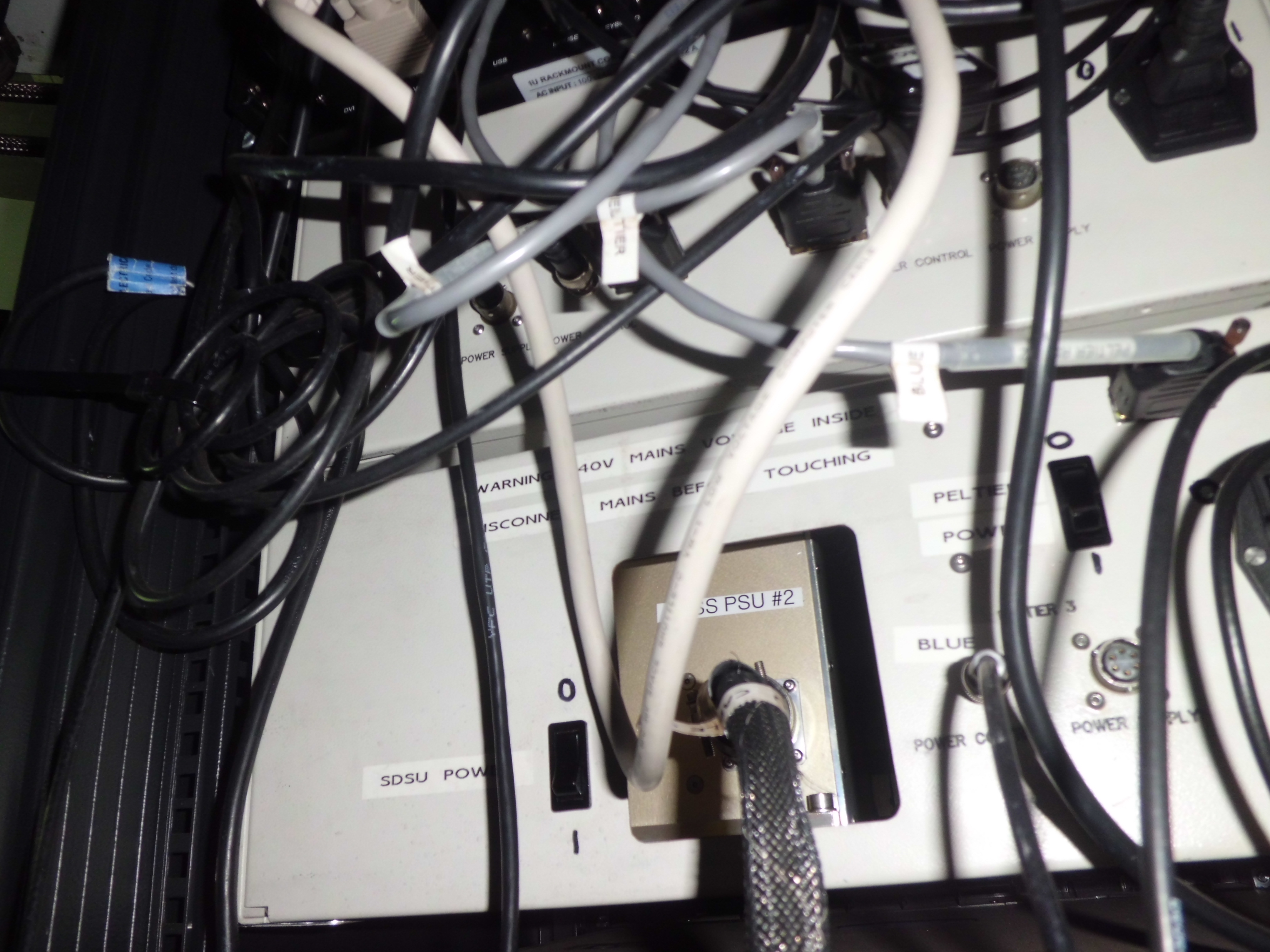
- Peltier power cables for each CCD head (R,G,B, grey or black depending on replacement history). The right-angled connections attach to the CCD head whilst the straight connections attach to the Peltier controllers.
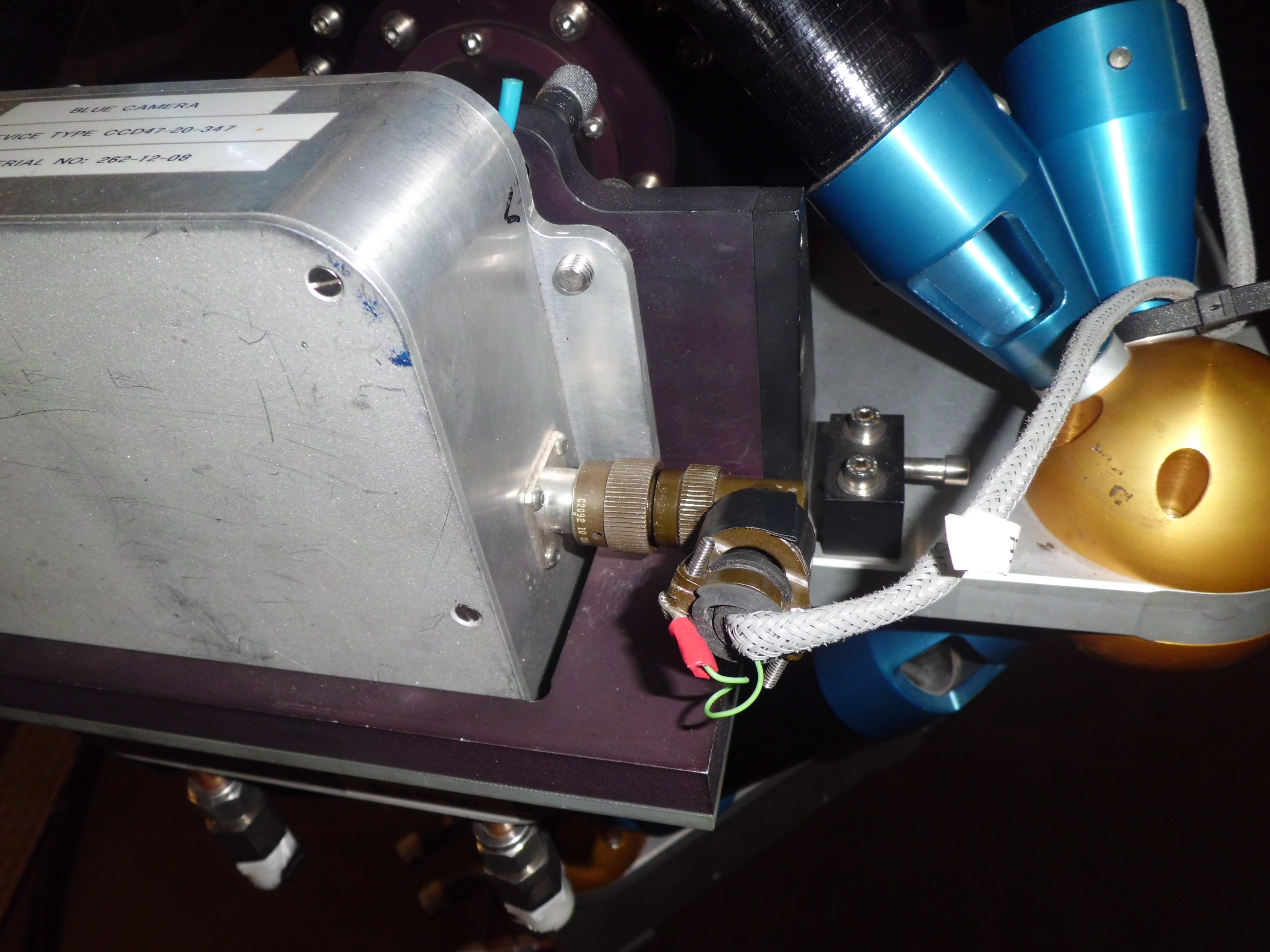
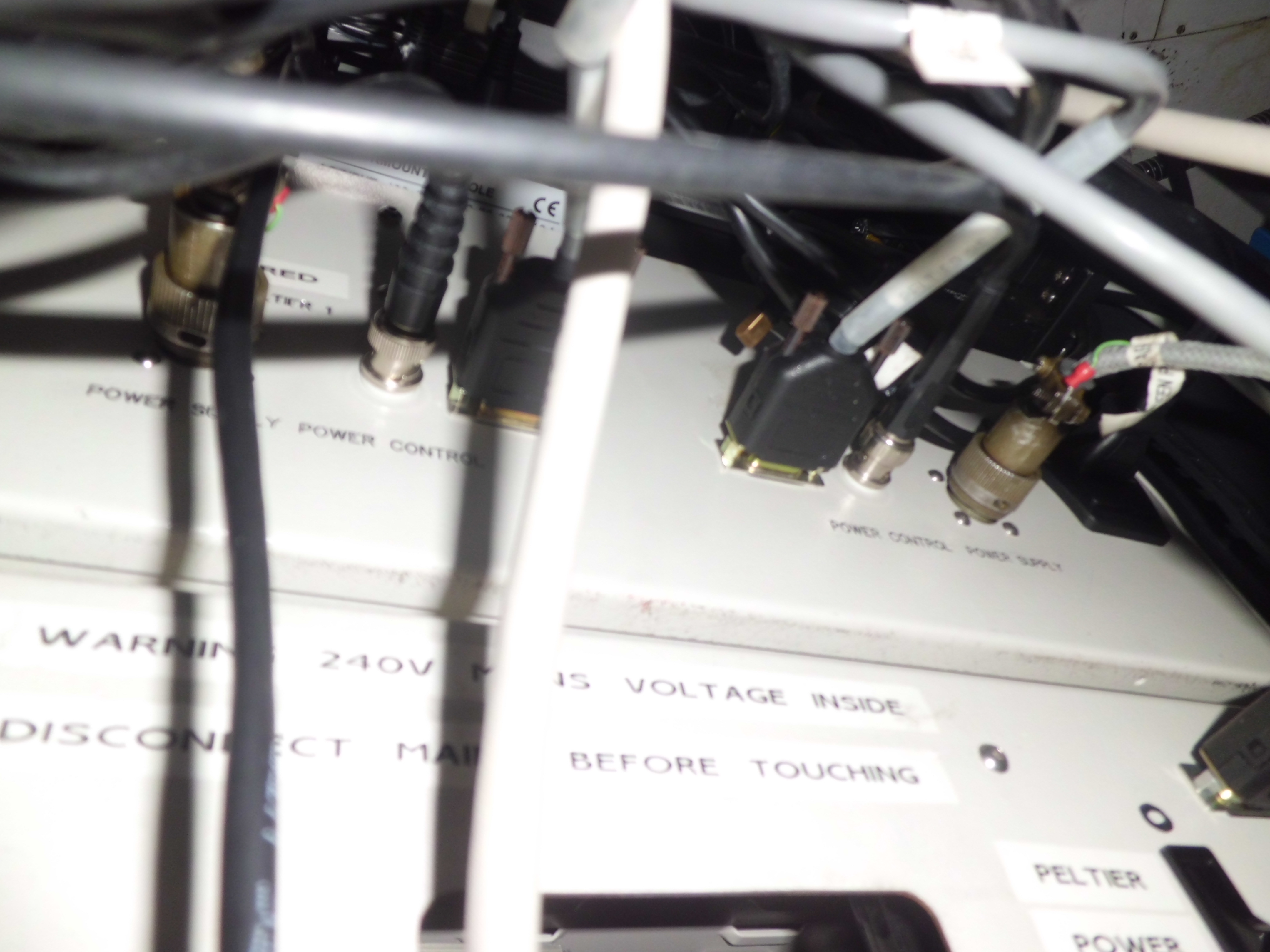
- Water hoses for drawing heat away from Peltier coolers. These are often stored under the observing floor (where the GPS cable comes up through) if the instrument has been installed here recently.
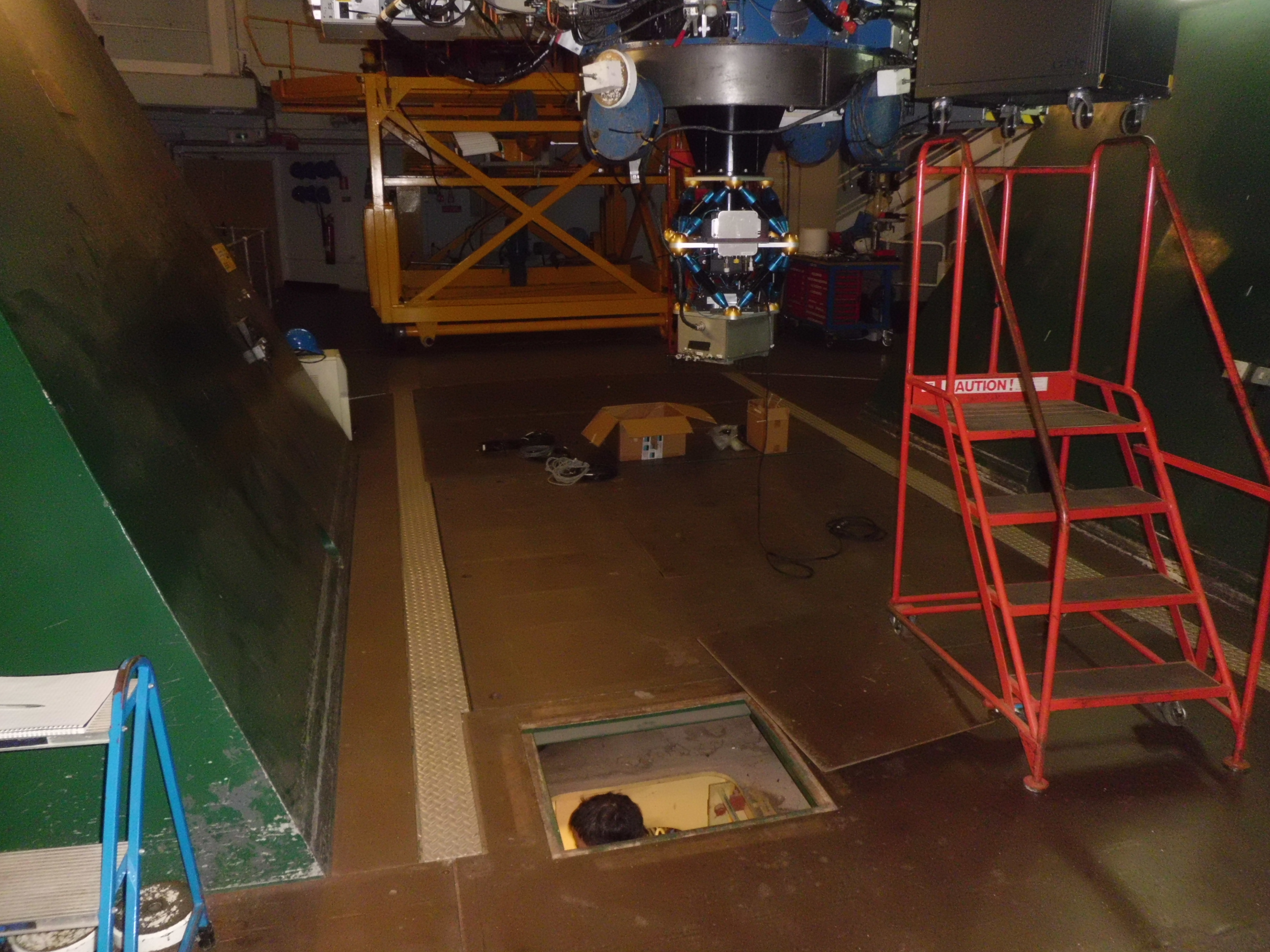
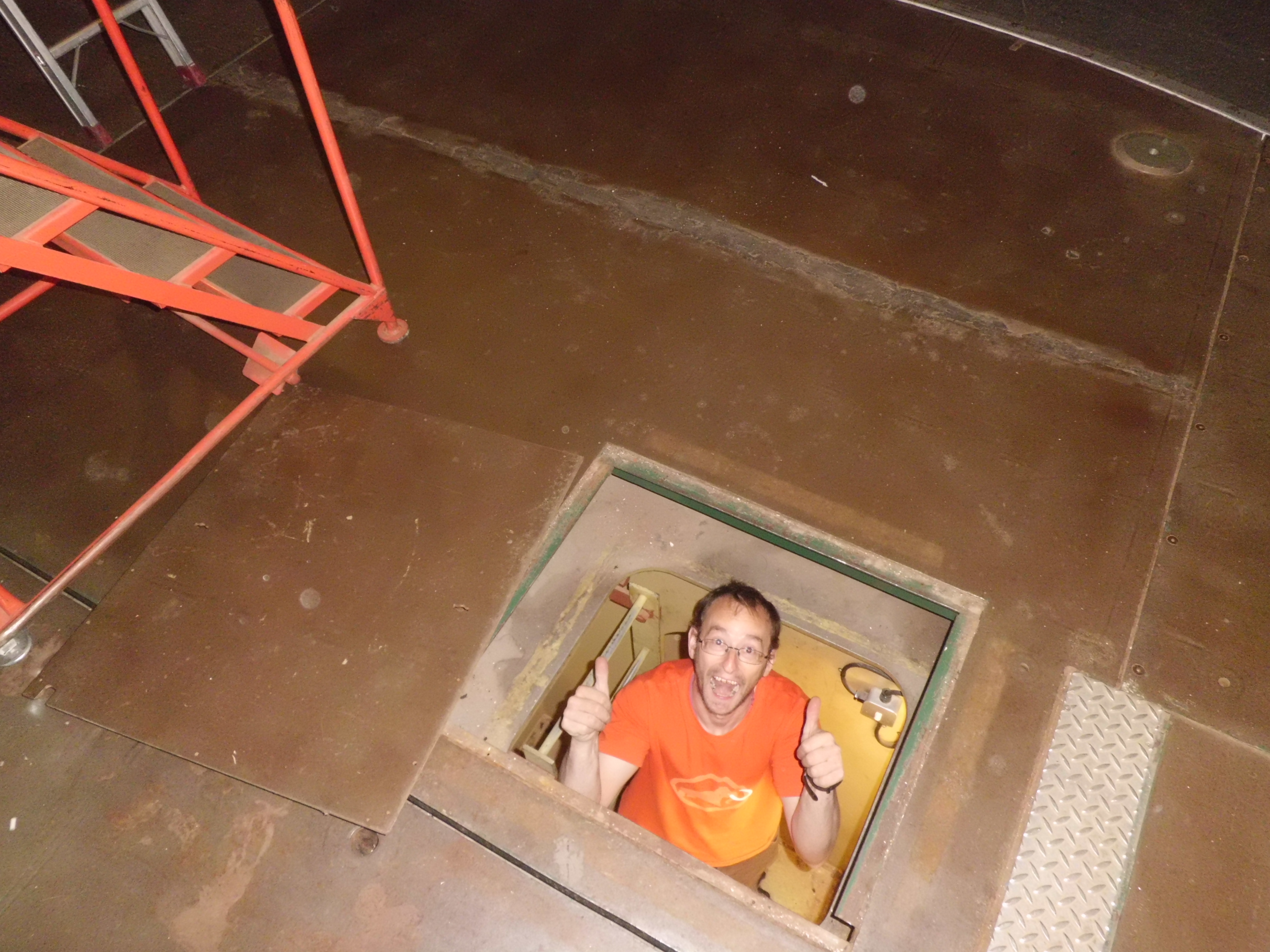
The long hoses attach to the inlet (Green CCD head) and outlet (SDSU controller on base of instrument) at the instrument and also into the chiller on the observing floor. Be careful to take the weight of these hoses using a cable tie, as the connectors are easily snapped.
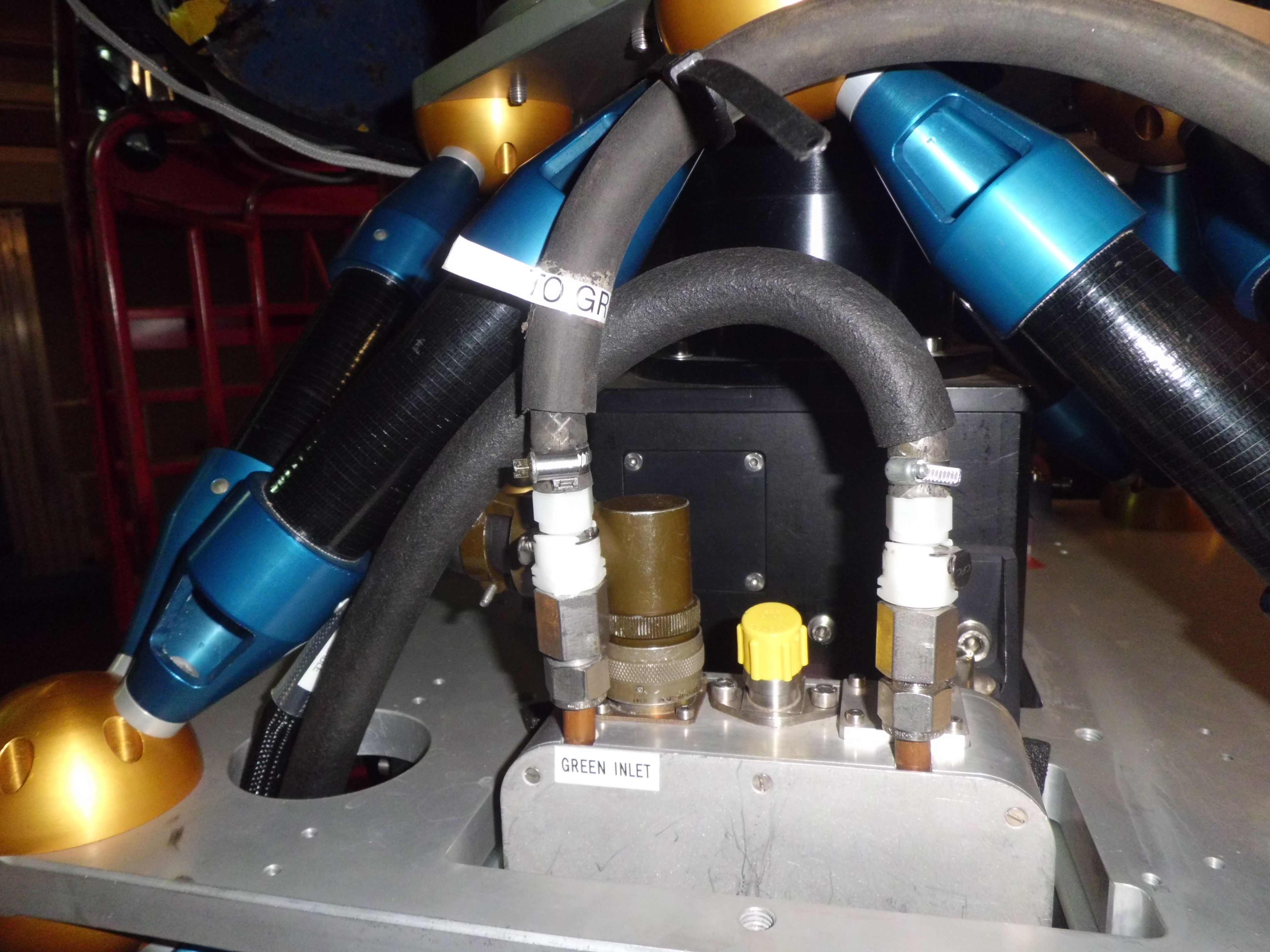
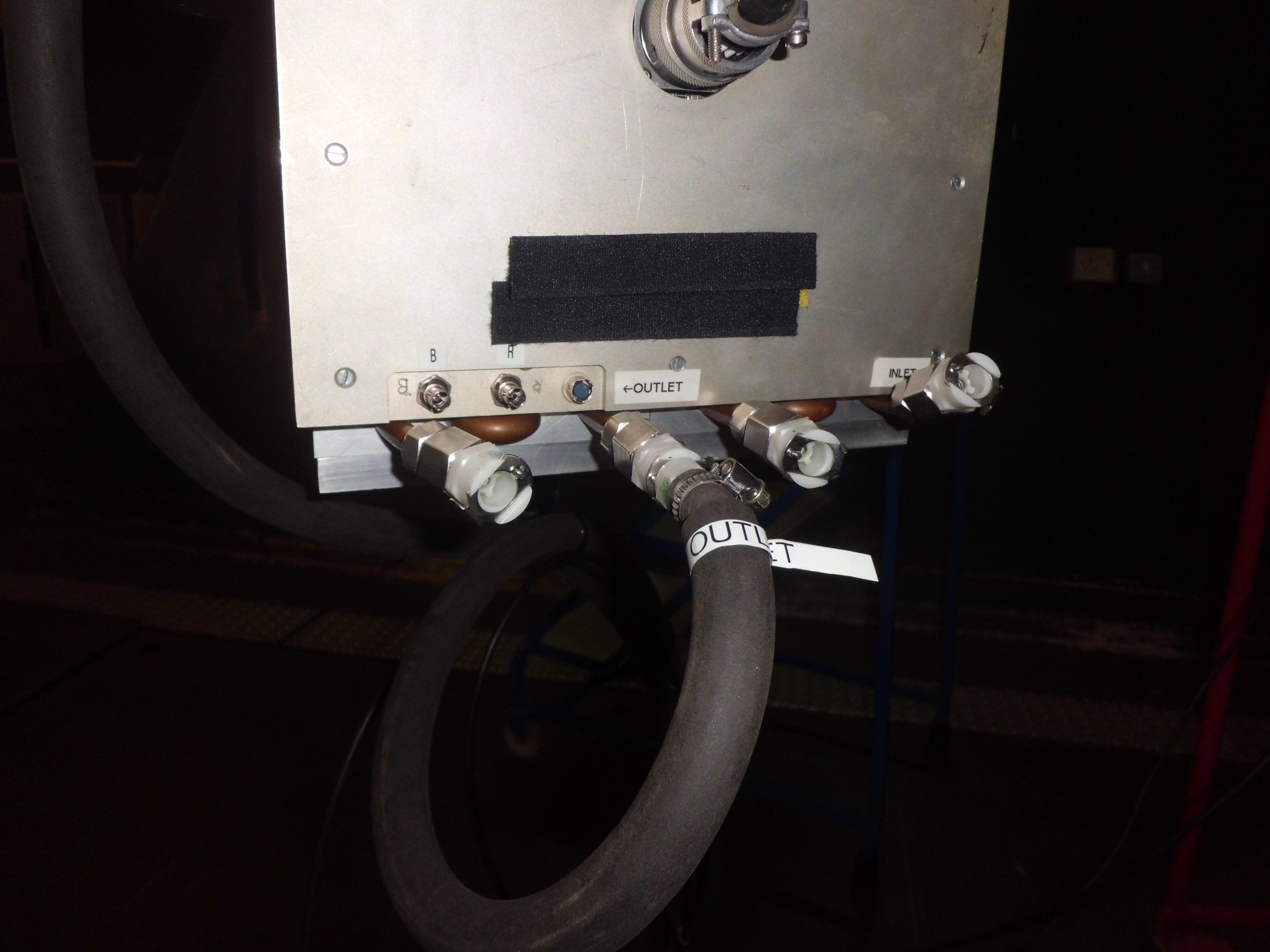
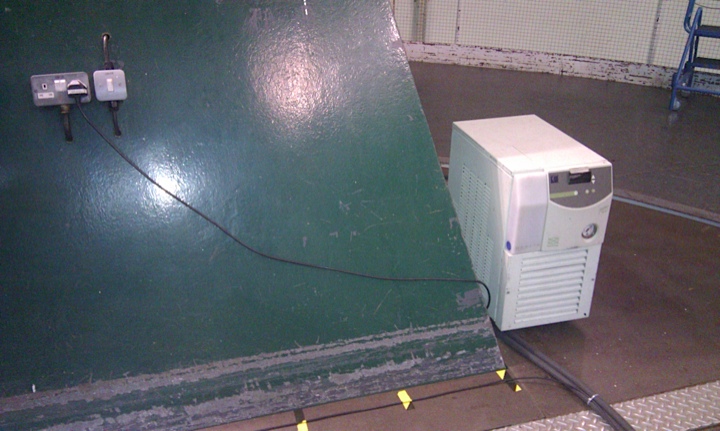
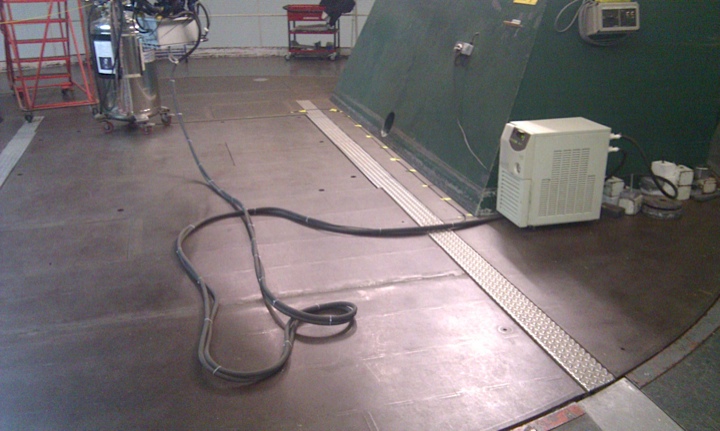
The GPS cable and the two inlet/outlet hoses are usually cable-tied
together for neatness, and loosely hung off the steel figure-of-eight
(or double hoop) "cable twister" on the base of the instrument, to
take the weight of the hoses as the telescope swings around. When
making this cable twister, make sure you use the thickest white cable
ties, if possible, as these are stronger and less brittle than the
black ones. Also, make sure you double all of them up for security, as
shown in the photo below.
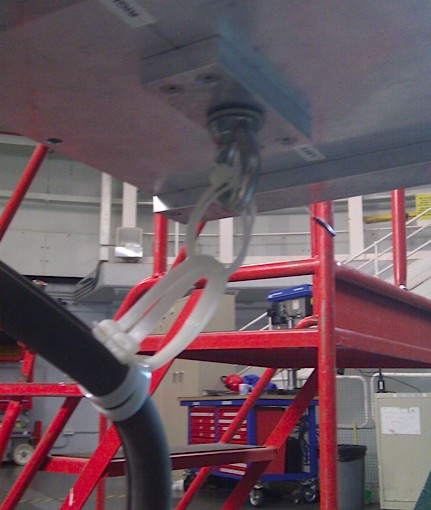
Now fill the water chiller with bottled water until the reservoir is
filled to its maximum mark, indicated by where the front panel of the
plastic tank changes angle. Before filling, make sure that the tap at
the bottom-rear of the chiller has been closed, otherwise water will
pour all over the observing floor as you are filling the reservoir!
Before packing away, the chiller should always be taken outside and
emptied of water by opening this tap. This prevents the build up of algae
within the unit. Always remember to close this tap once you have emptied
the tank.
- Hose connectors. Most of these should be left permanently
connected apart from: 1. The two long hoses described above; 2. The
very short U-shaped host running between the two ports on the SDSU
controller; 3. The hose running between the SDSU inlet and the blue
CCD outlet. It is very important you remove all of these hoses before
packing the instrument away in its storage crate, as otherwise it is
possible to snap them off and/or dislodge the CCD head.
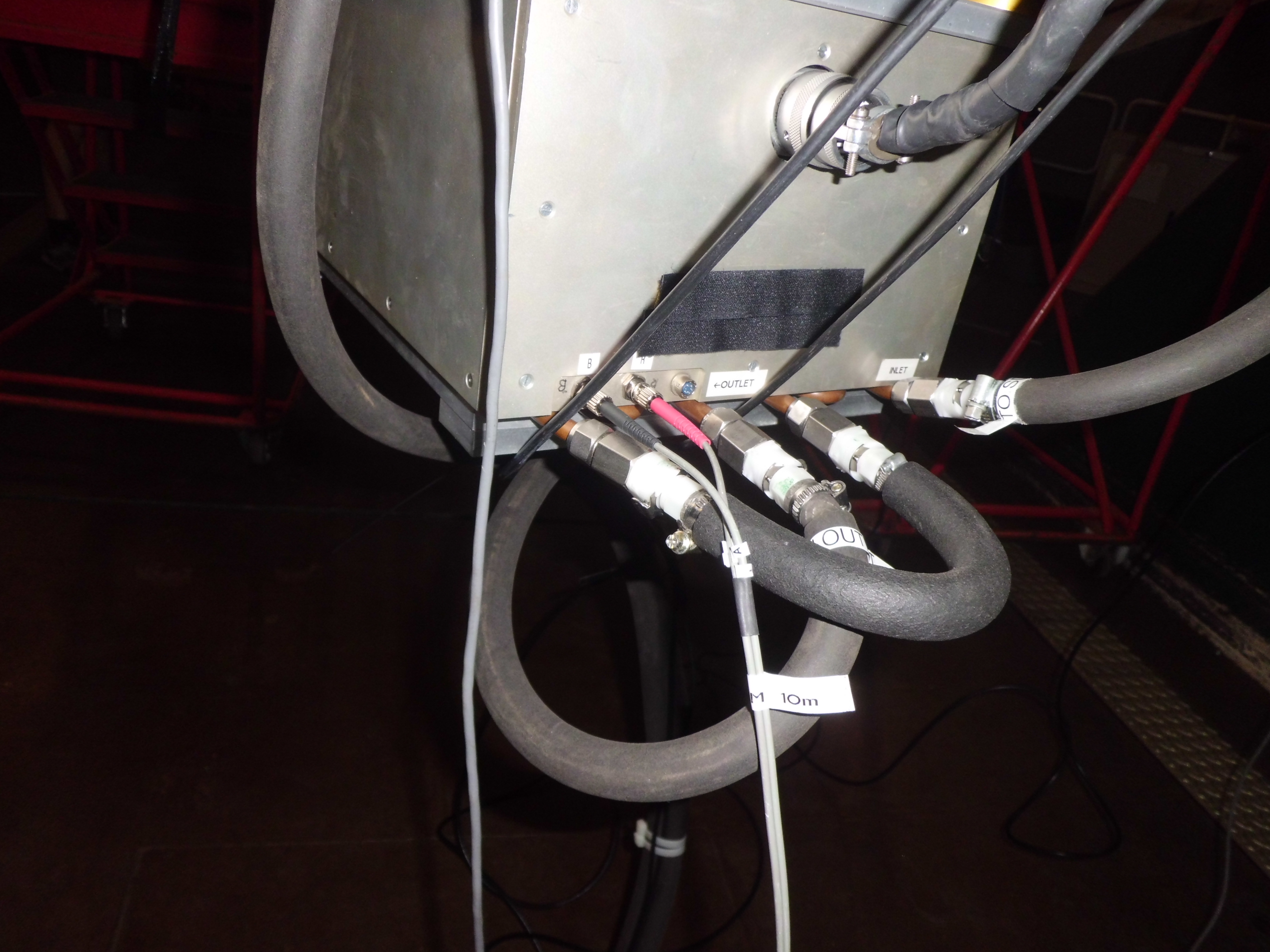
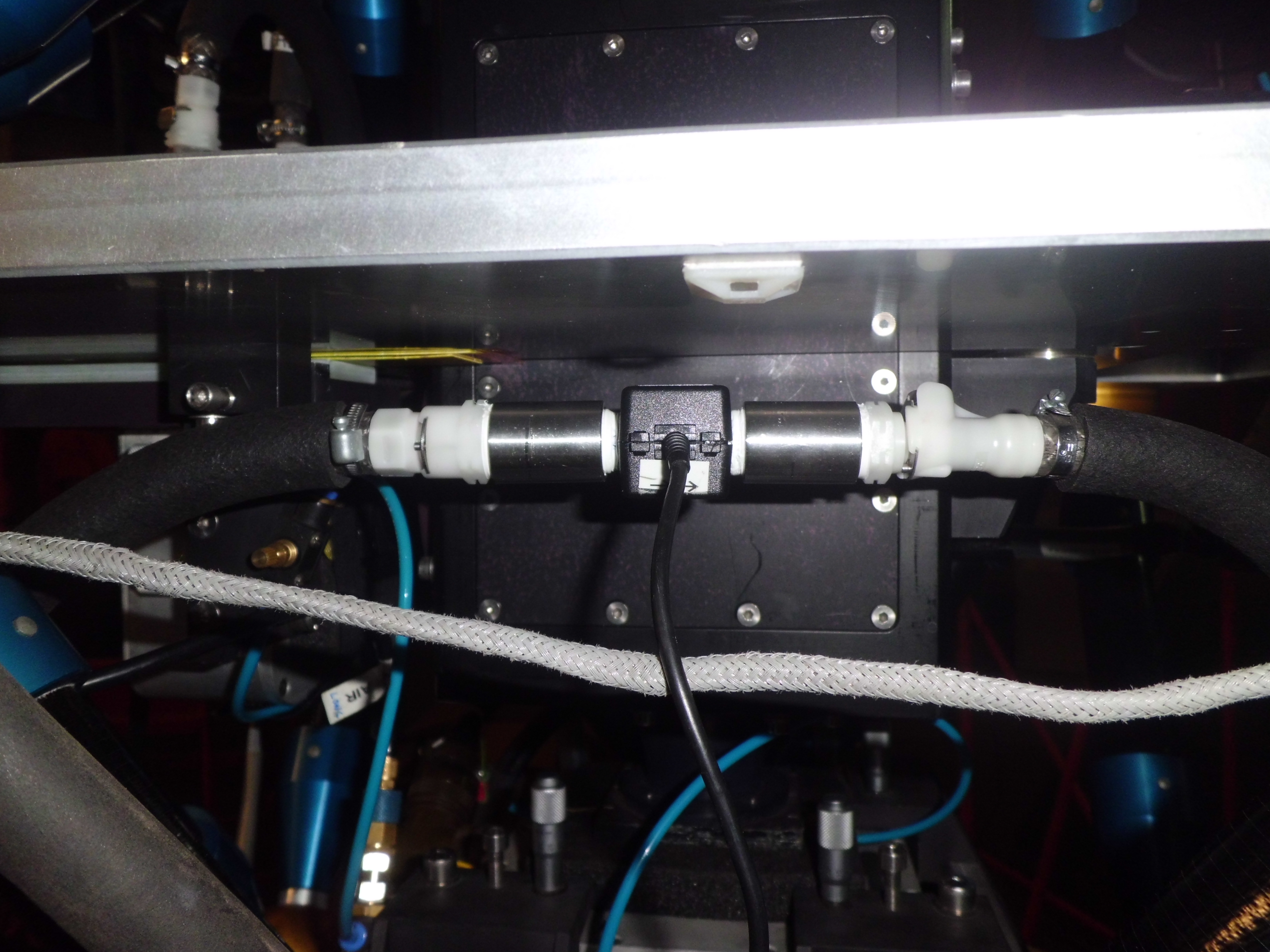
- GPS and temperature monitor cables, which follow the water hoses from the chiller/observing floor should be passed through to the front of the rack and connected to their inputs on the top shelf. Make sure you secure excess GPS cable between the hole in the floor and the chiller using hi-visibility tape.
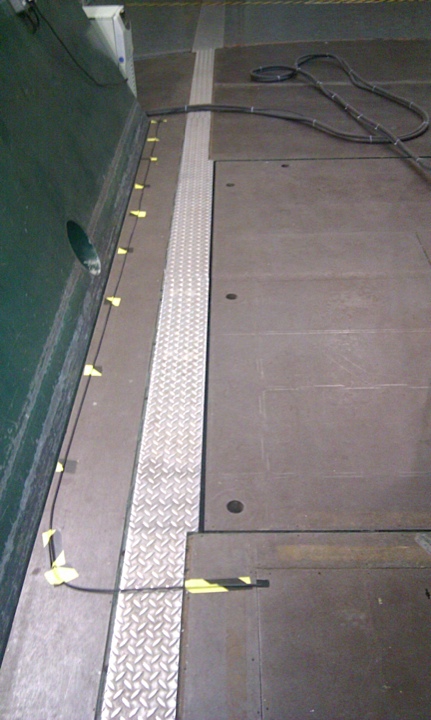
- Ethernet cable between Ultracam rack and DRPC. You will need two ethernet cables (8-10m each). One should be connected between the network switch on the rack and the second network port on the cassegrain block (usually just to the right of ACAM).
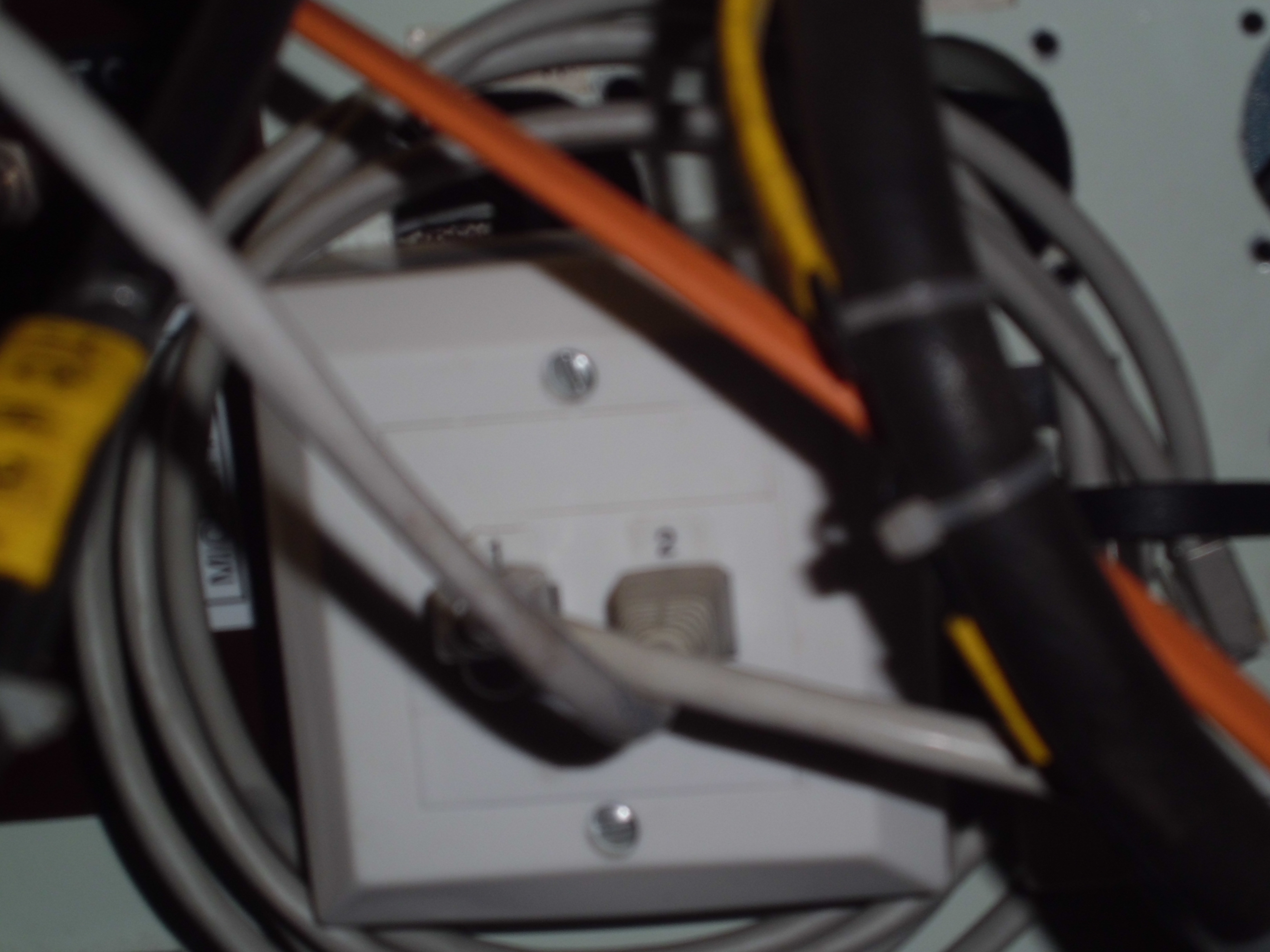
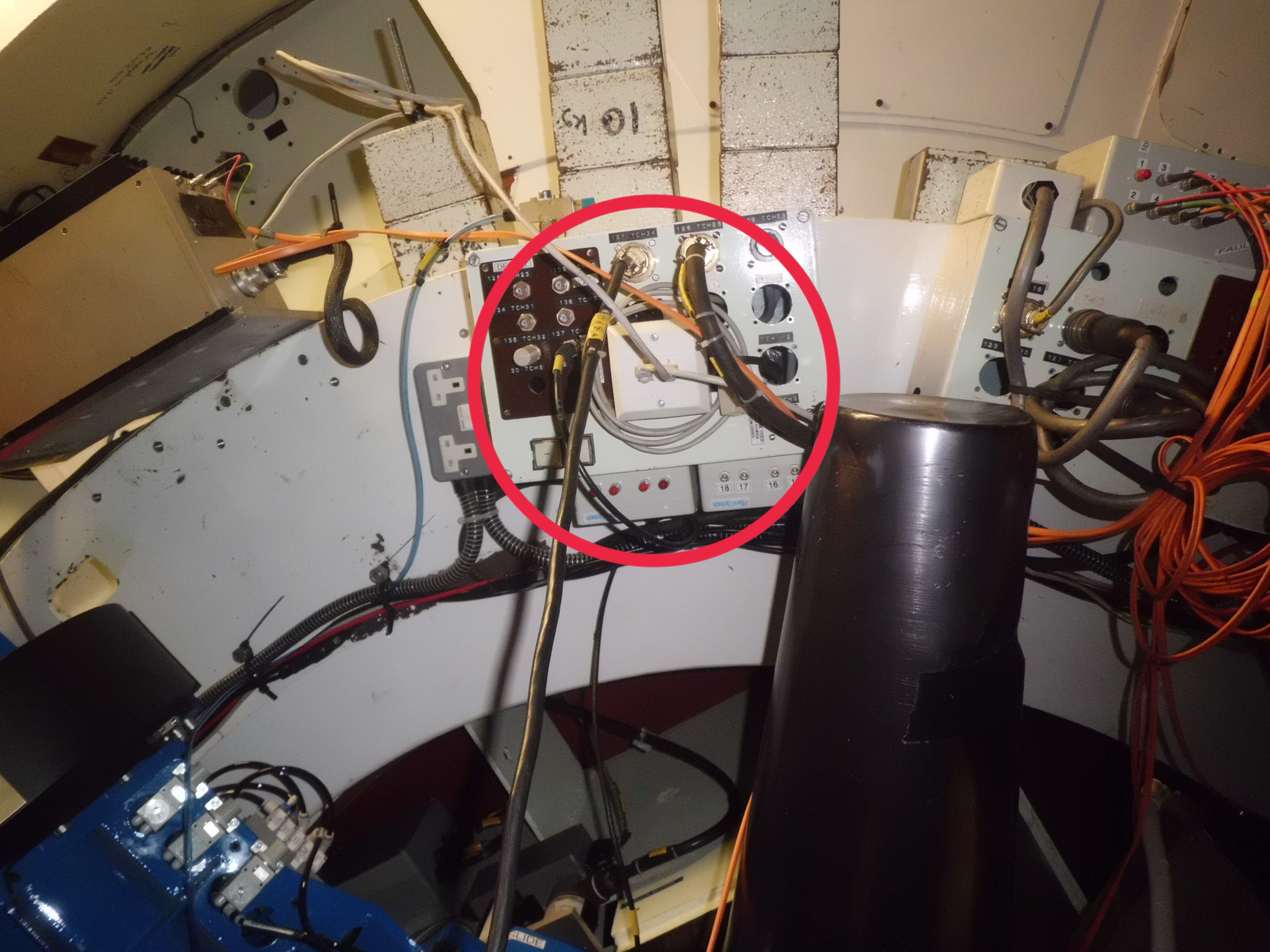
The other cable should connect the "telescope 2" port in the network racks behind the Telescope Operator desk in the control room to the ultracam data reduction PC network switch.
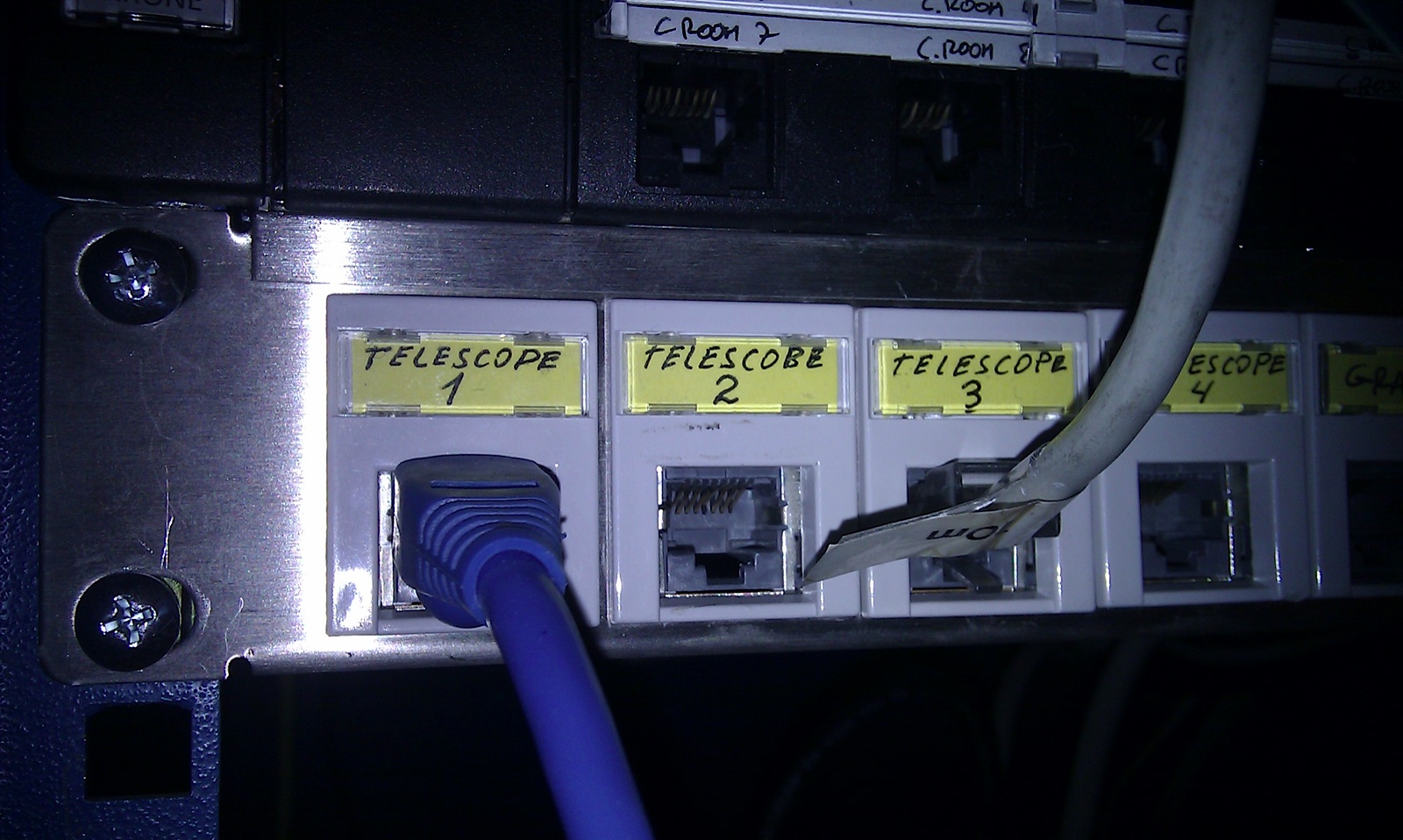
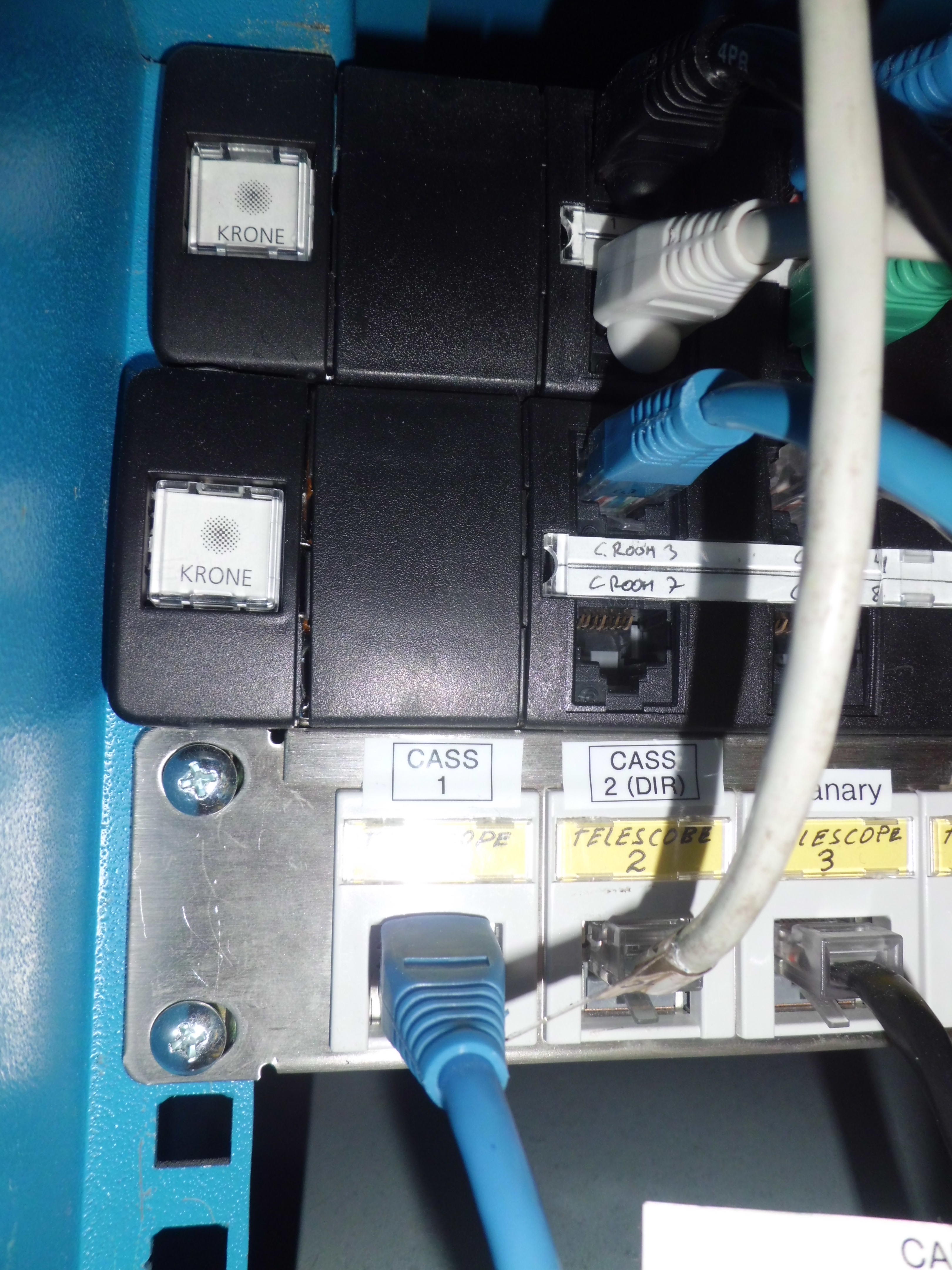
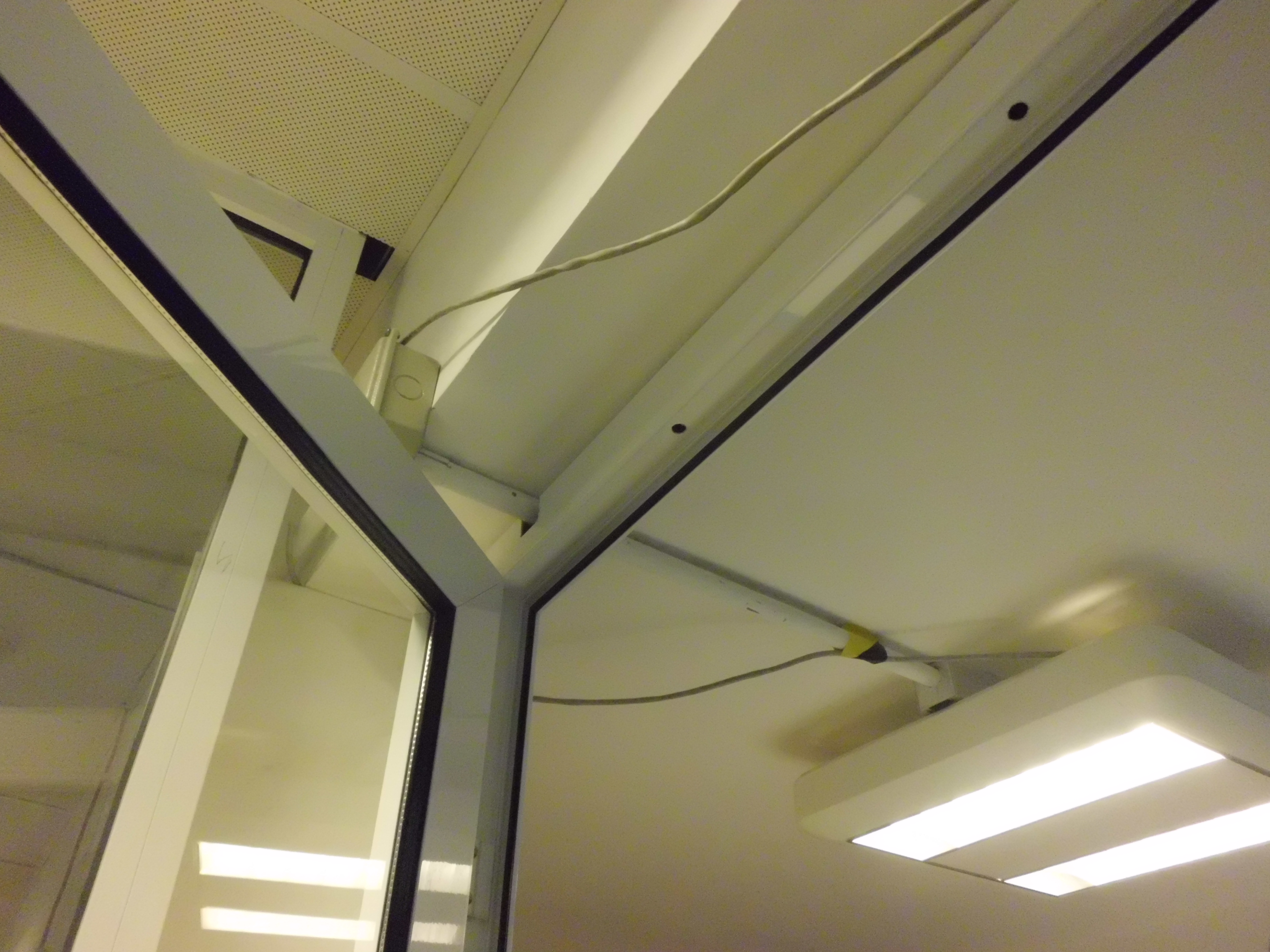
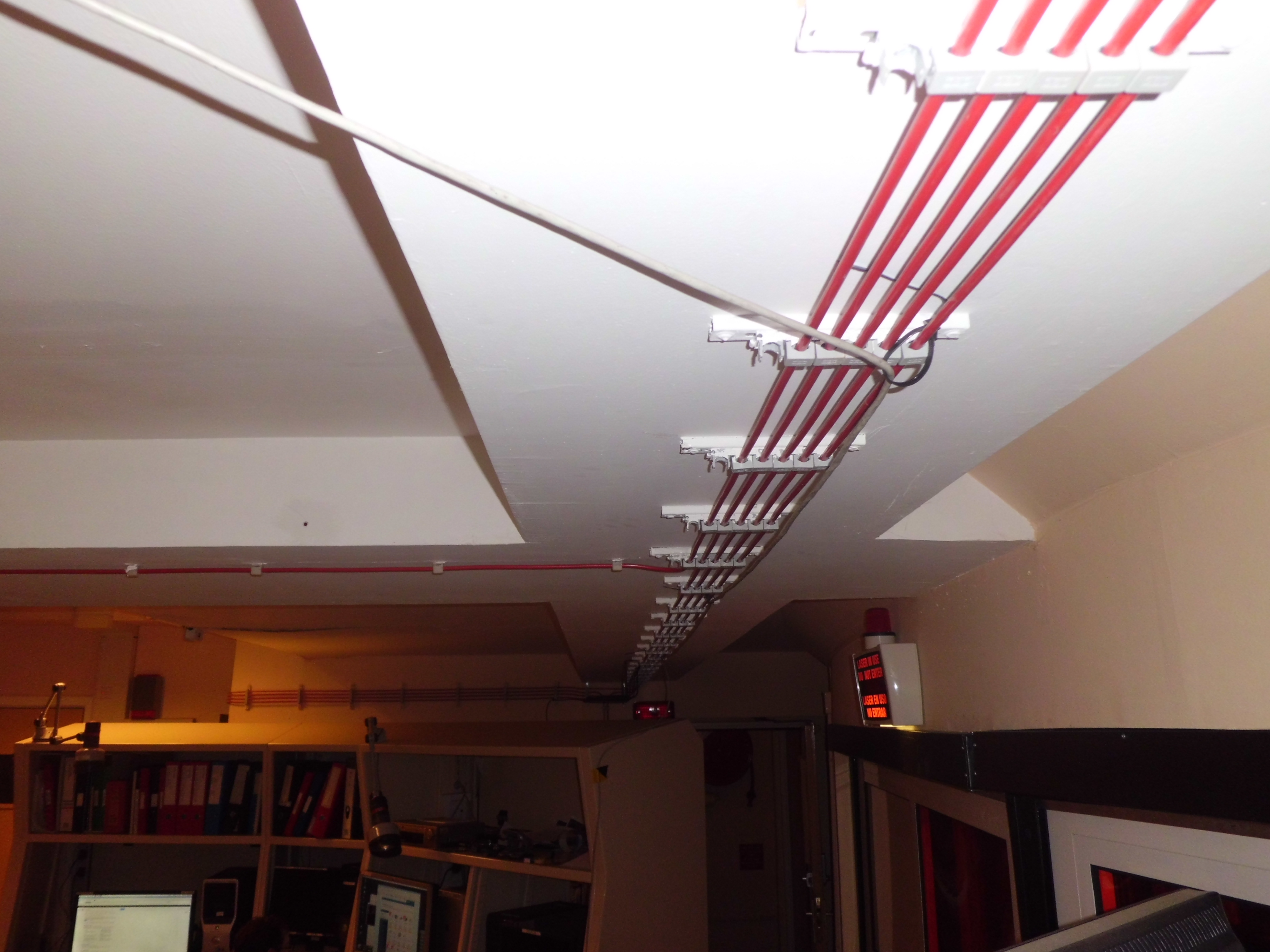
- Dry nitrogen hose. This red hose should be connected to the
instrument and to one of the four nitrogen source sockets on the
cassegrain block. Very slowly turn on the nitrogen flow to
approximately 0.5-1.0 litres/min, as indicated by the floating red
marker. Turning this on too fast can blow all of the nitrogen
connections on the instrument!
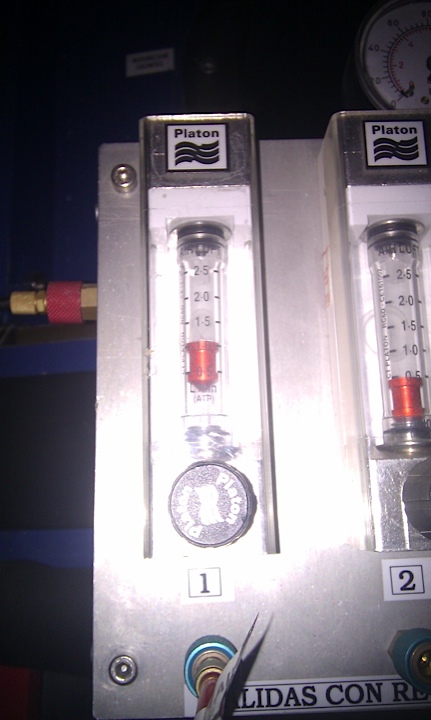
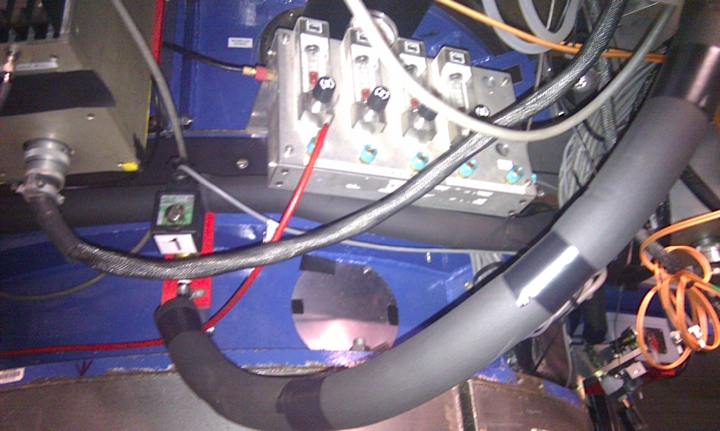
- Connect the focal plane slide to the imedia PC on the rack.
- Fibre cables (grey with red and black connectors) between SDSU controller and rack PC.

- Flow control sensor to the flow control box on the rack.
- GPS interrupt cable between SDSU controller and rack PC.
- Rack power cable to standard 240V socket on telescope.
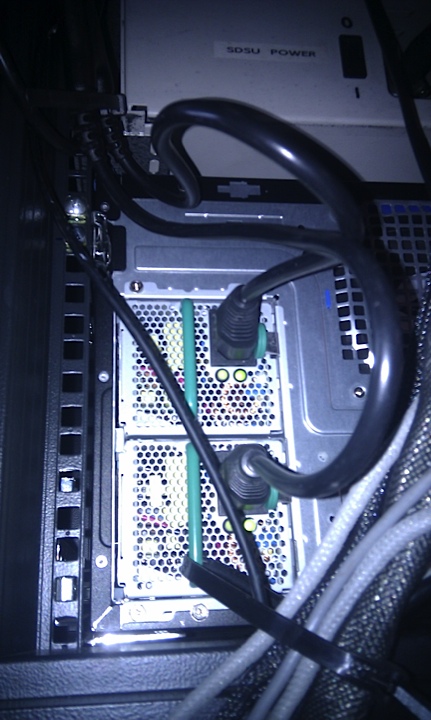
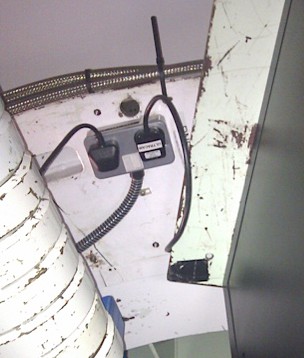
Make sure you secure all loose cables, and avoid passing data cables
close to power cables! At this point the ING engineers should
re-balance the telescope, even if they have already done so, as the
weight of all the cables can be important. Make sure that the ING
engineers do not put counterweights between the electronics rack and
the Cass rotator, as this can make accessing the back of the ULTRACAM
electronics rack very awkward when there are problems.
That's it - the instrument should now be ready for powering up - see
the ULTRACAM
user manual for details.
